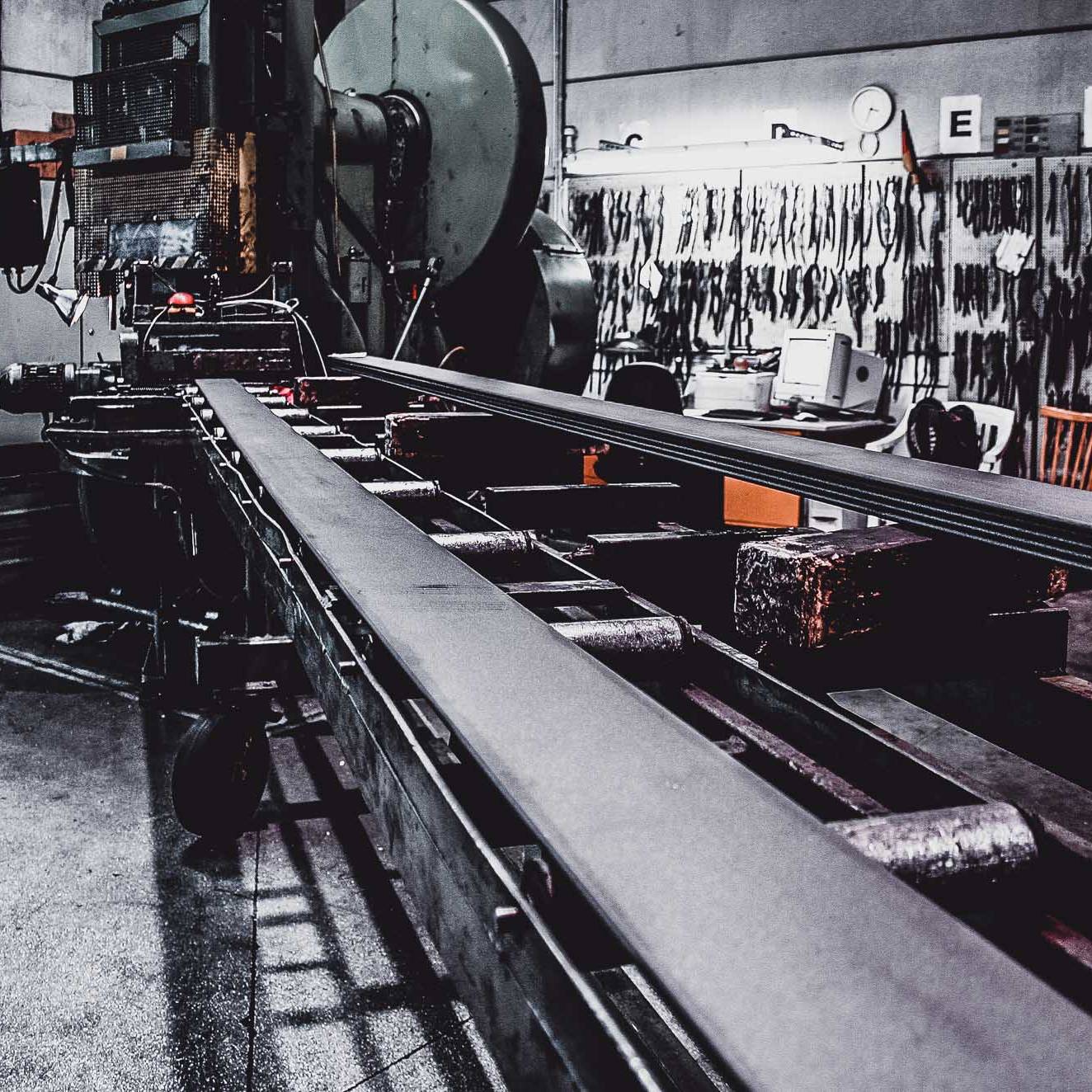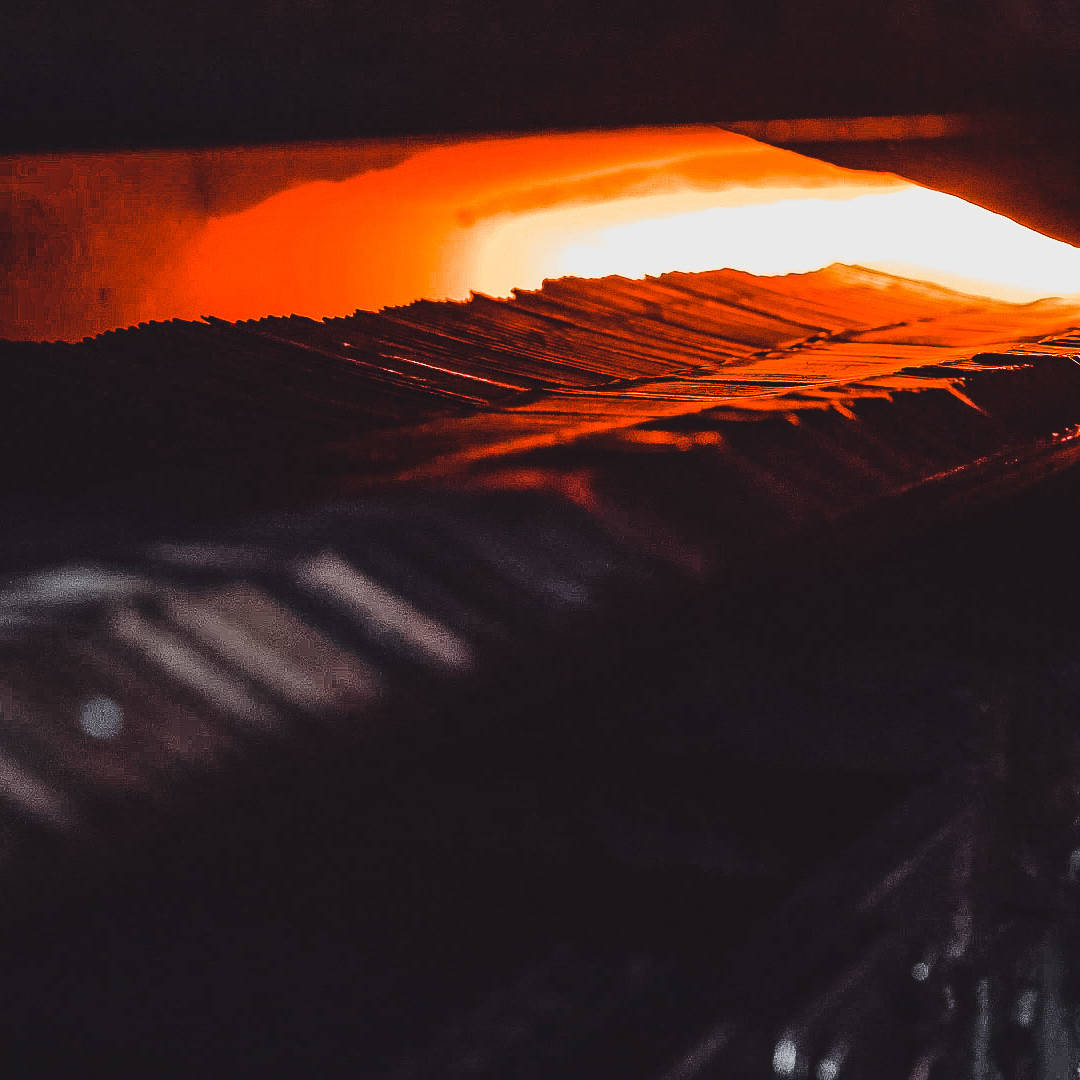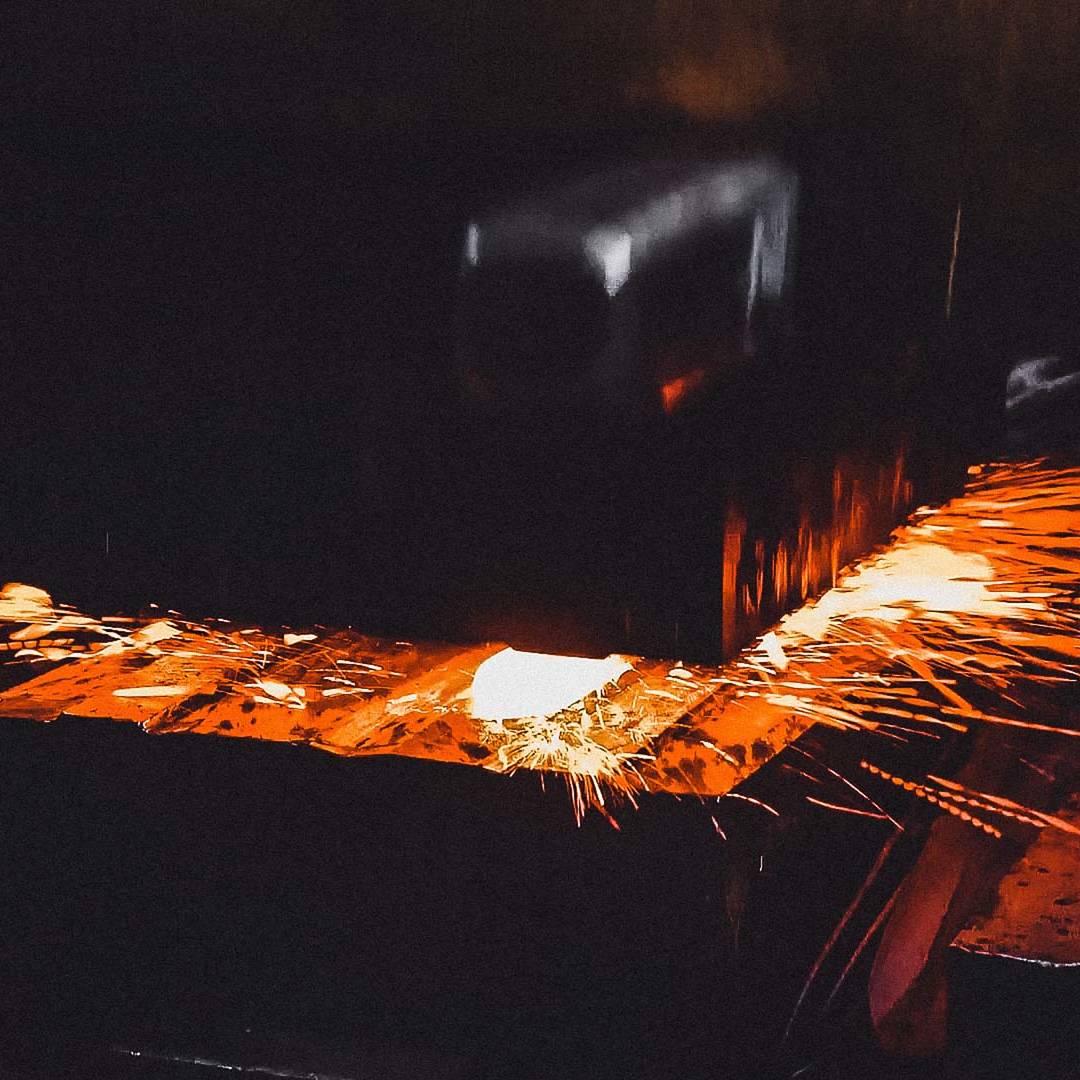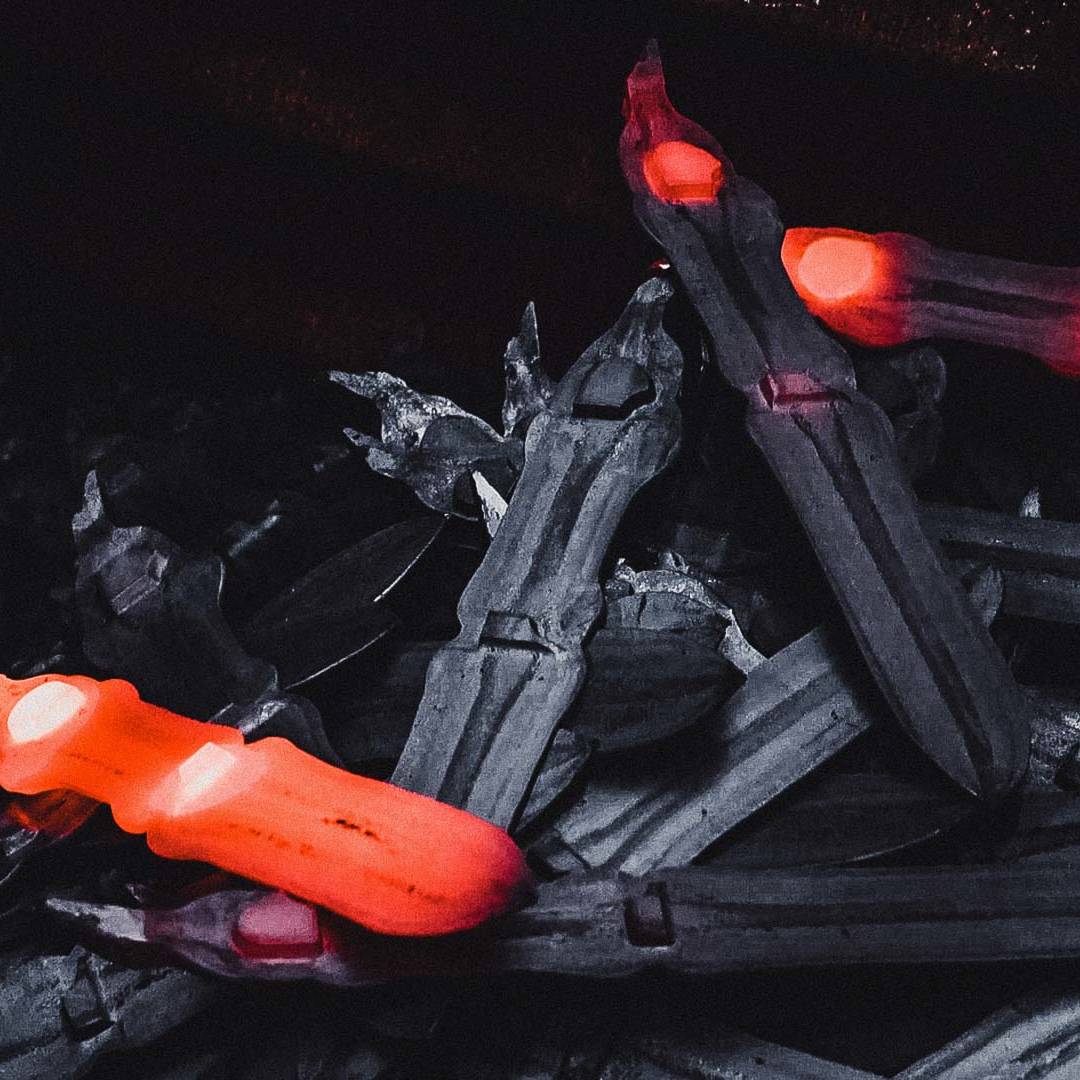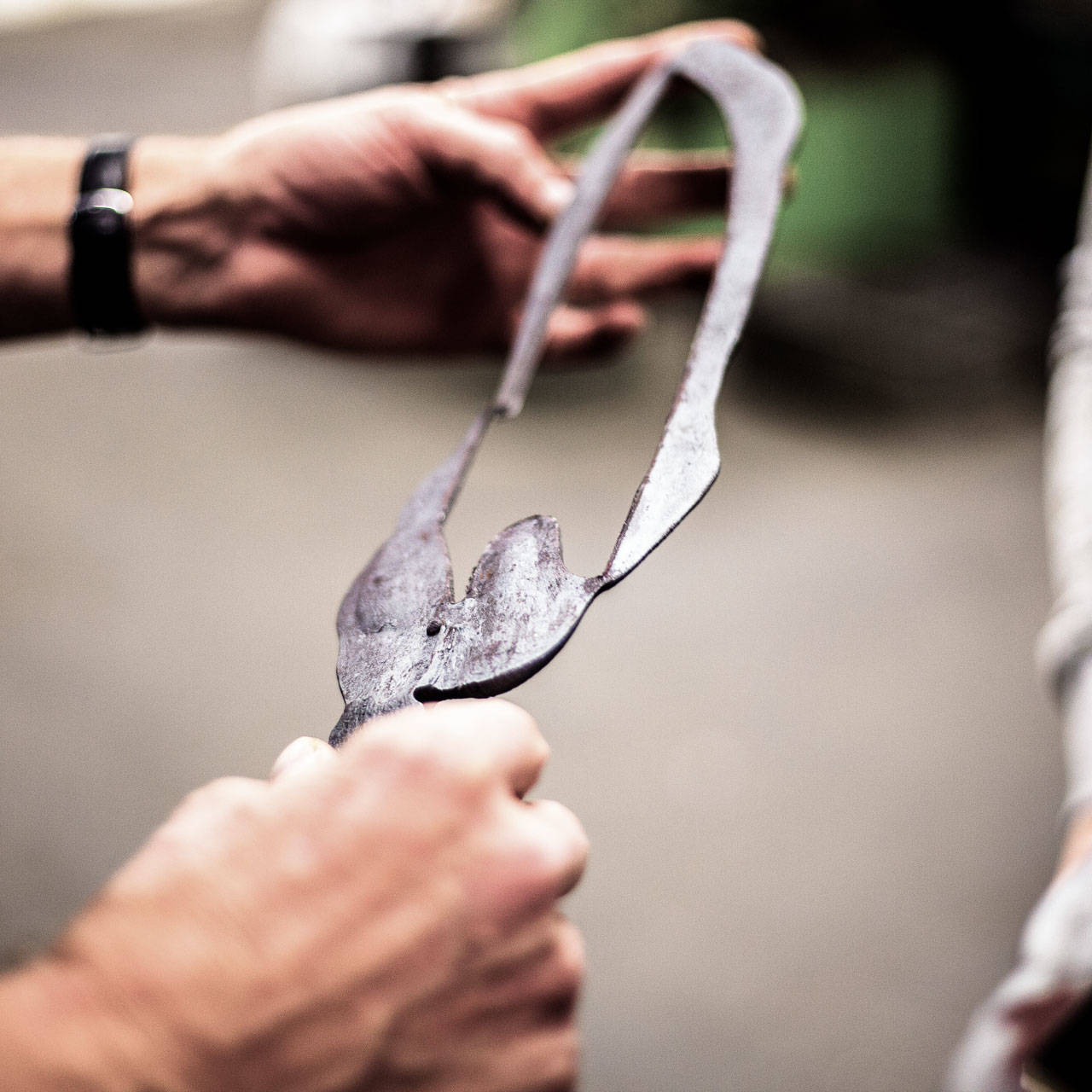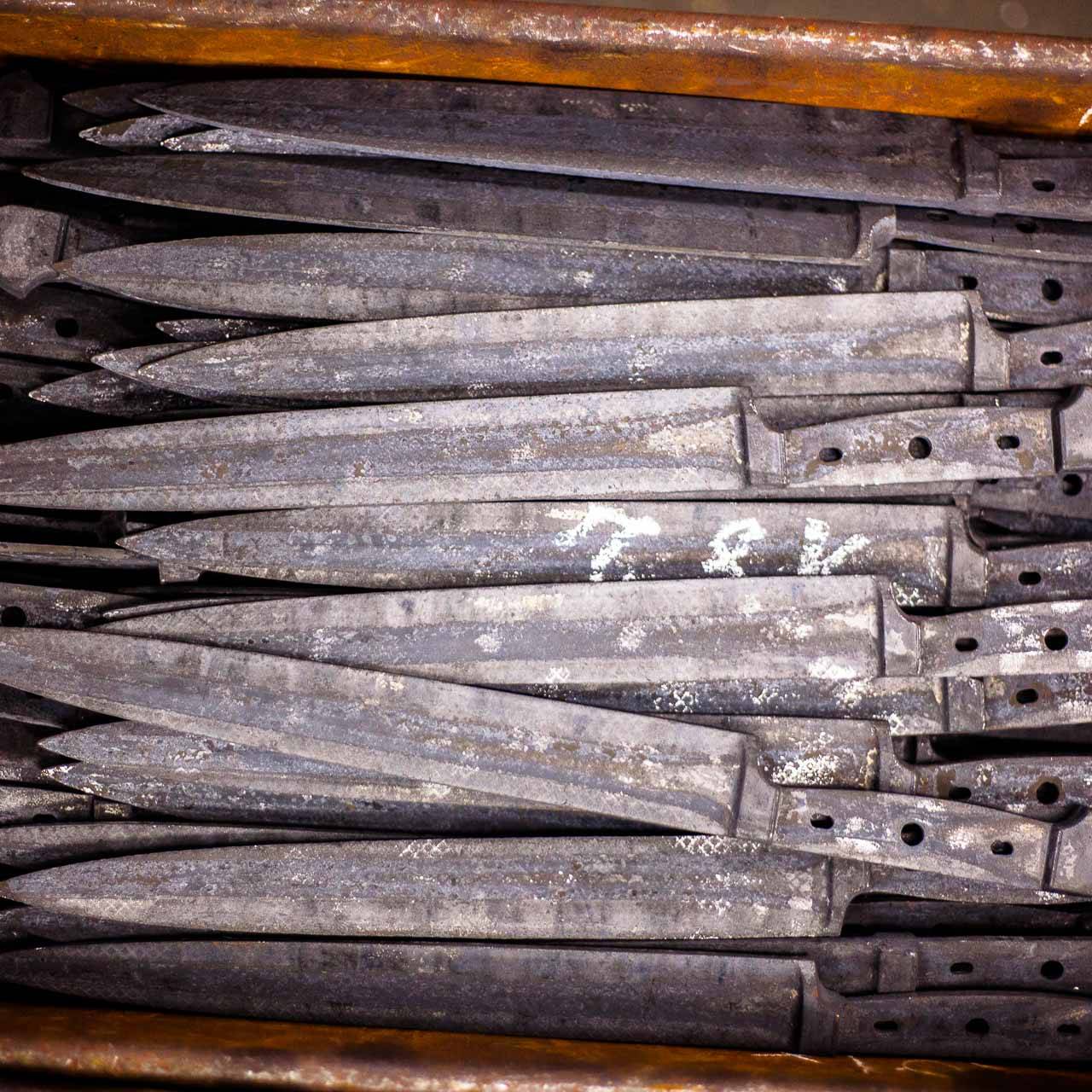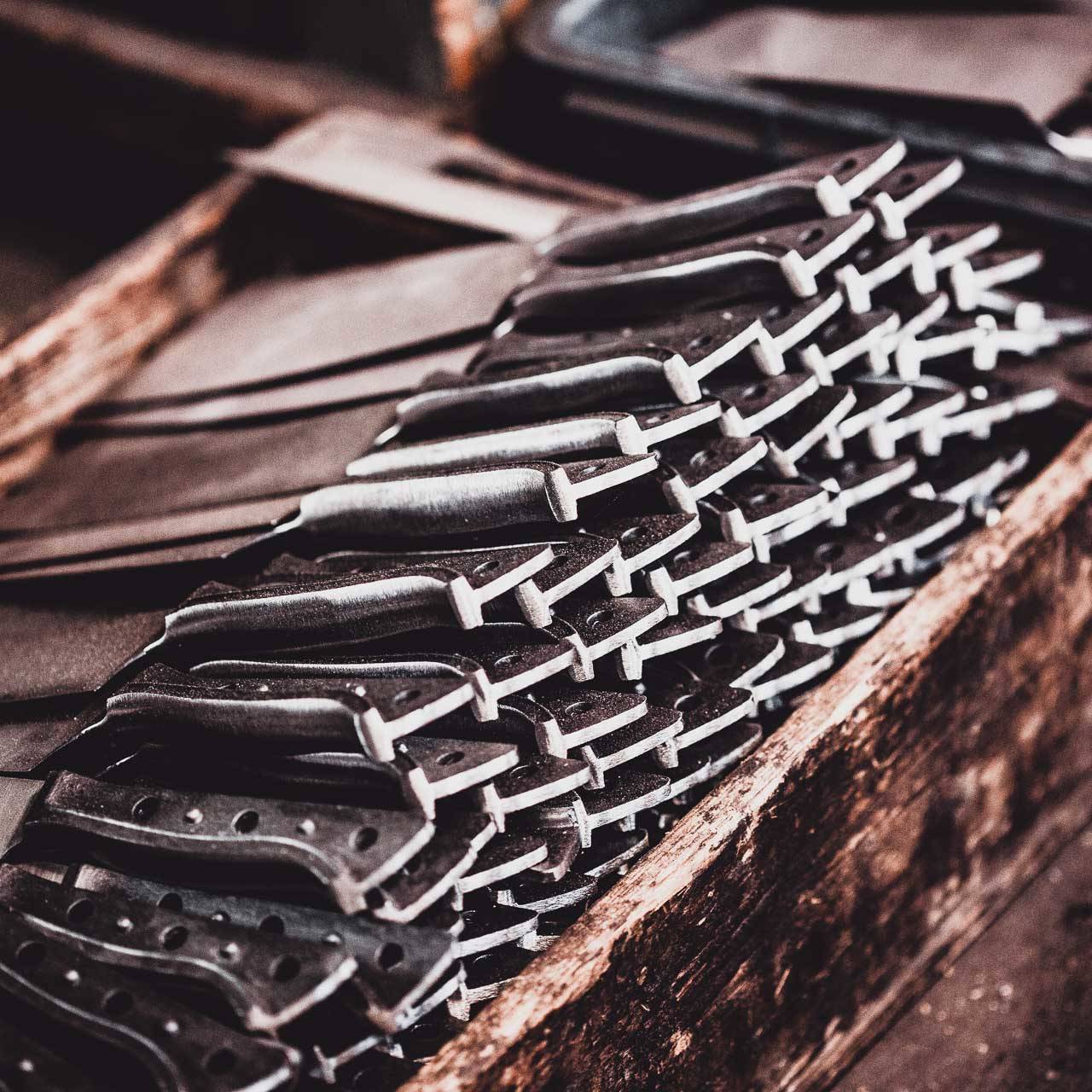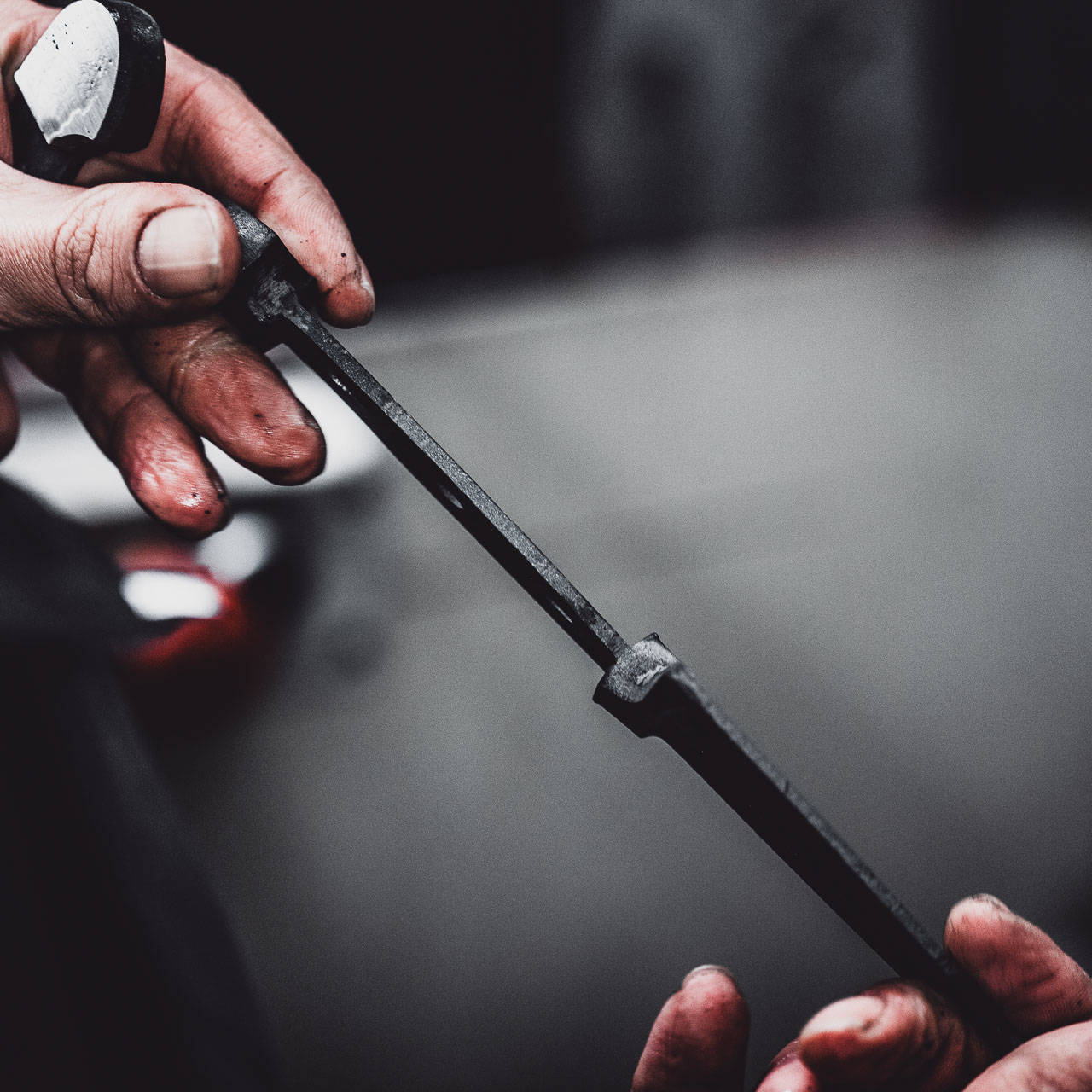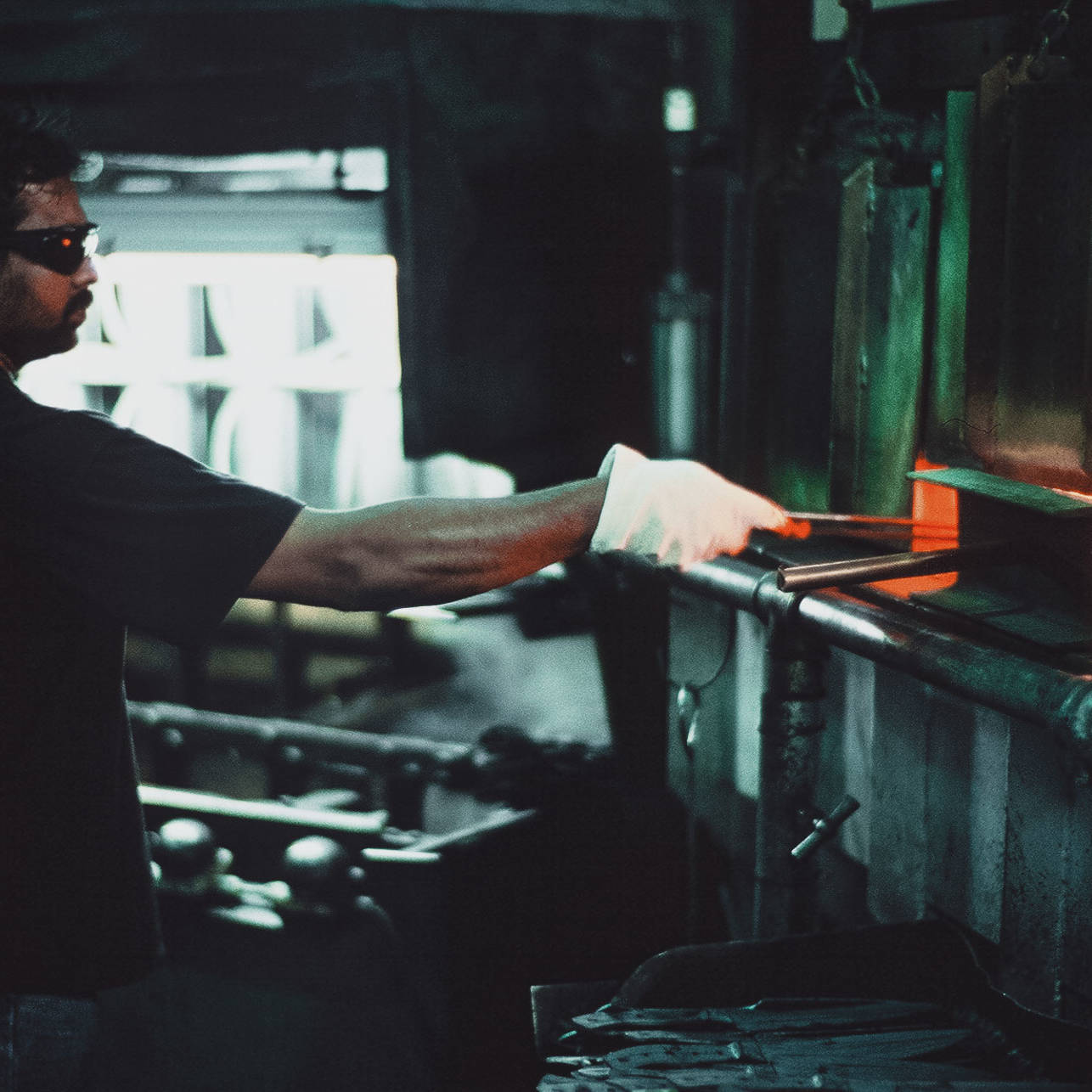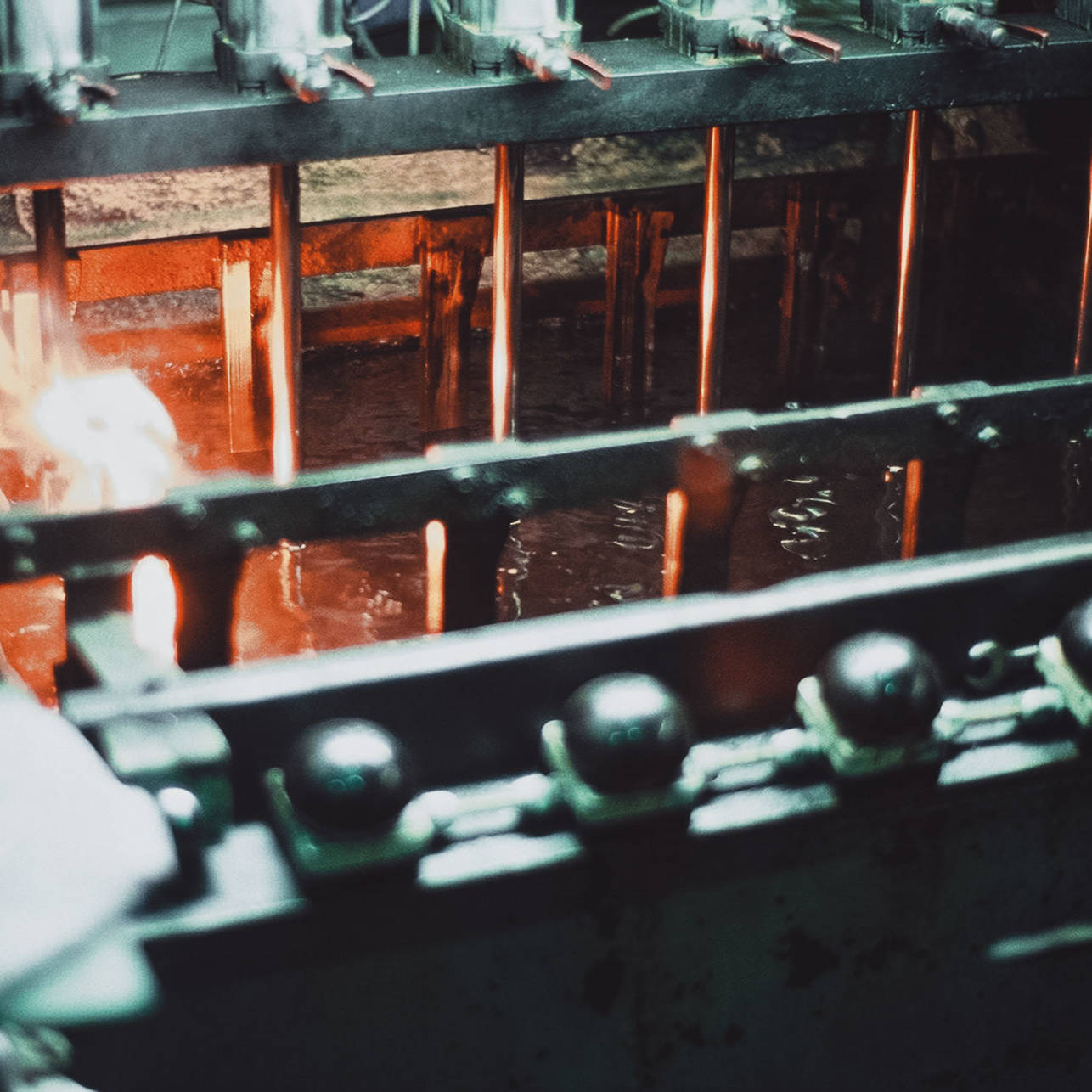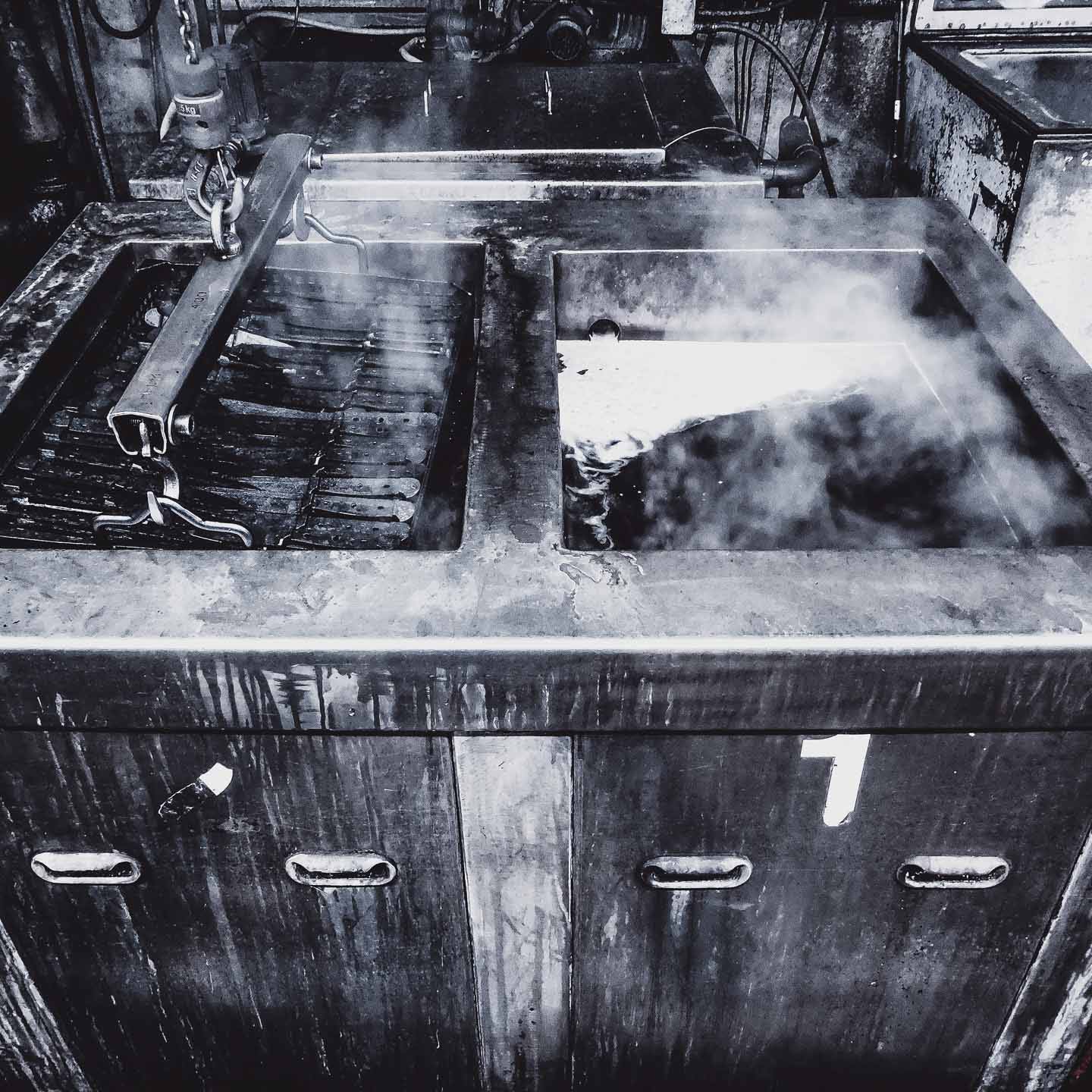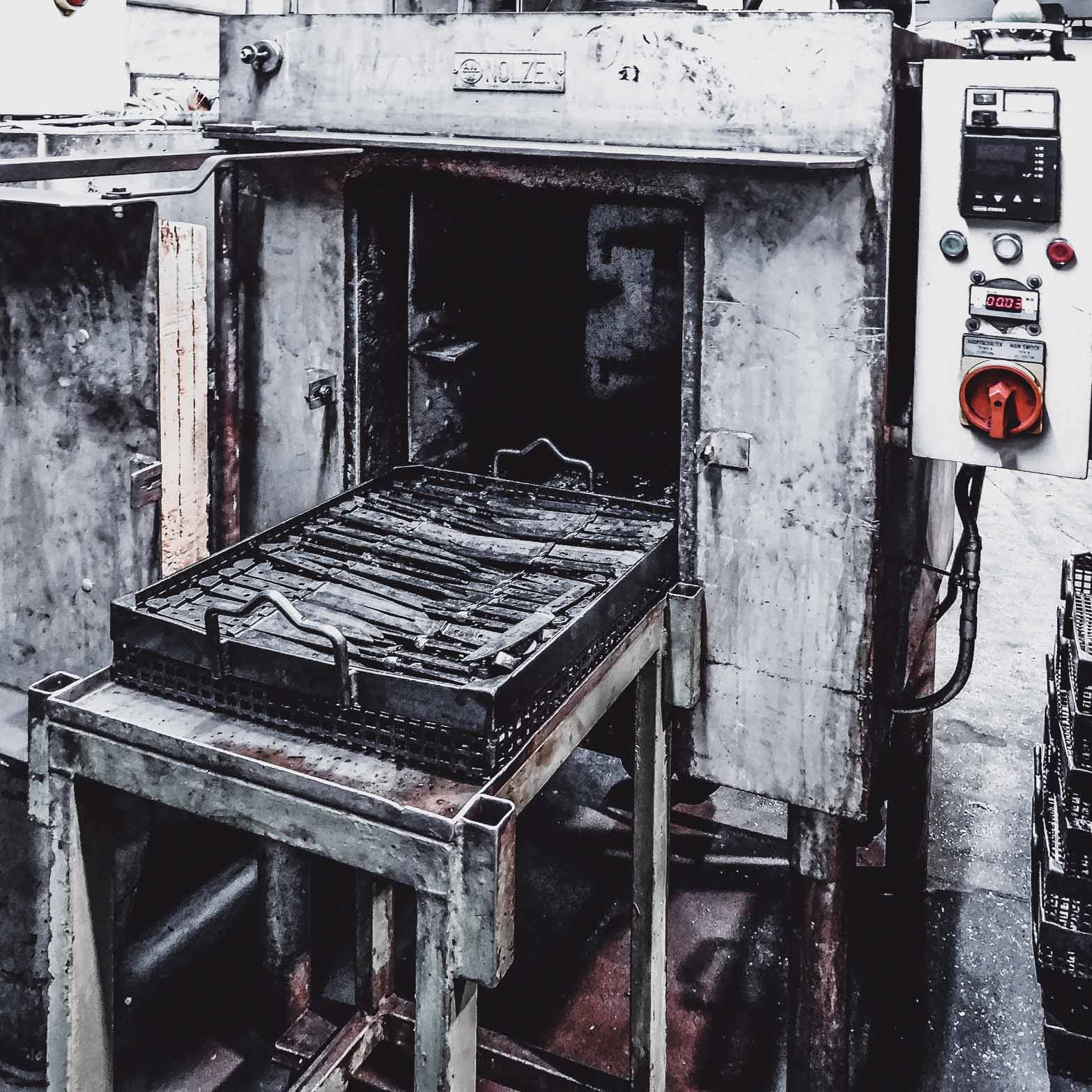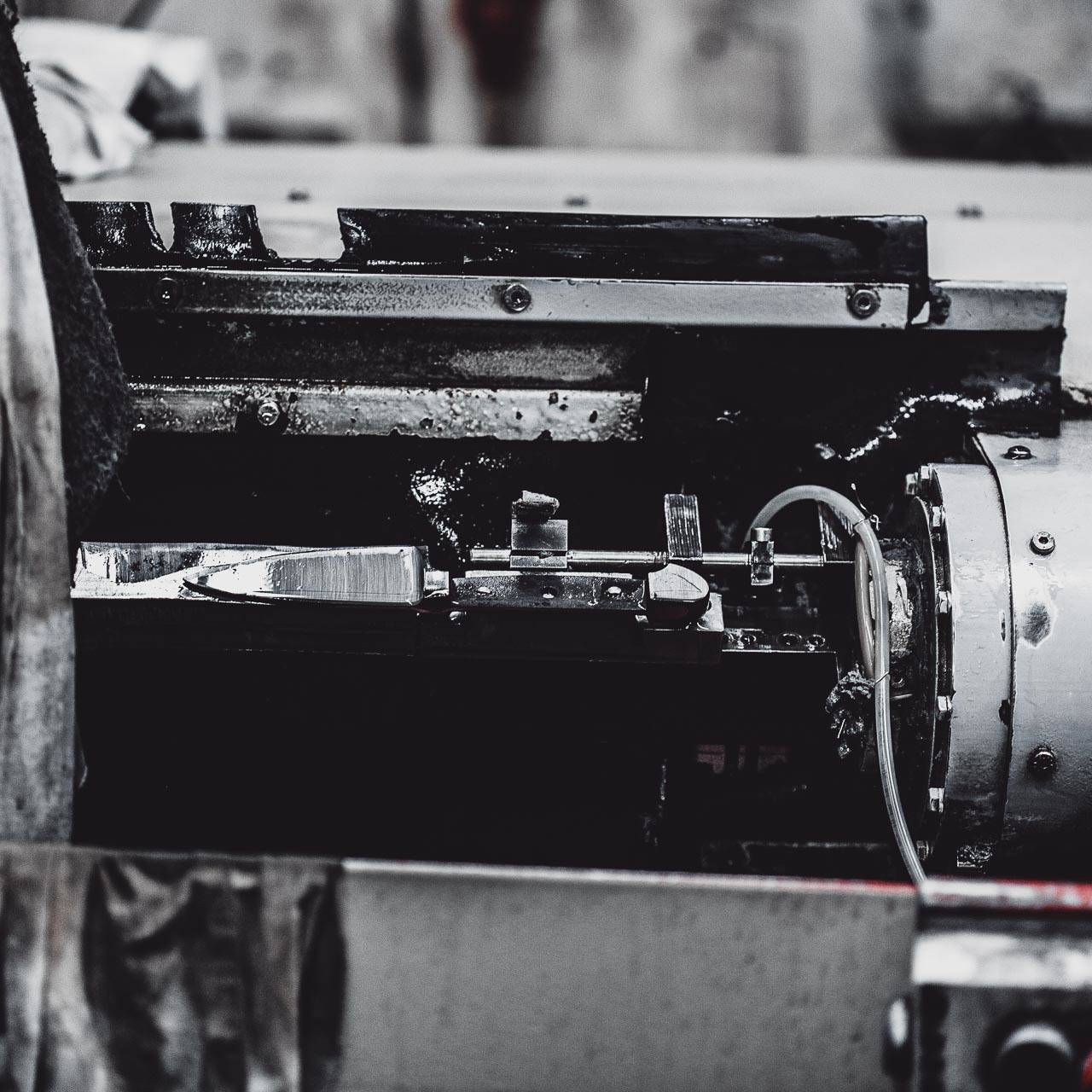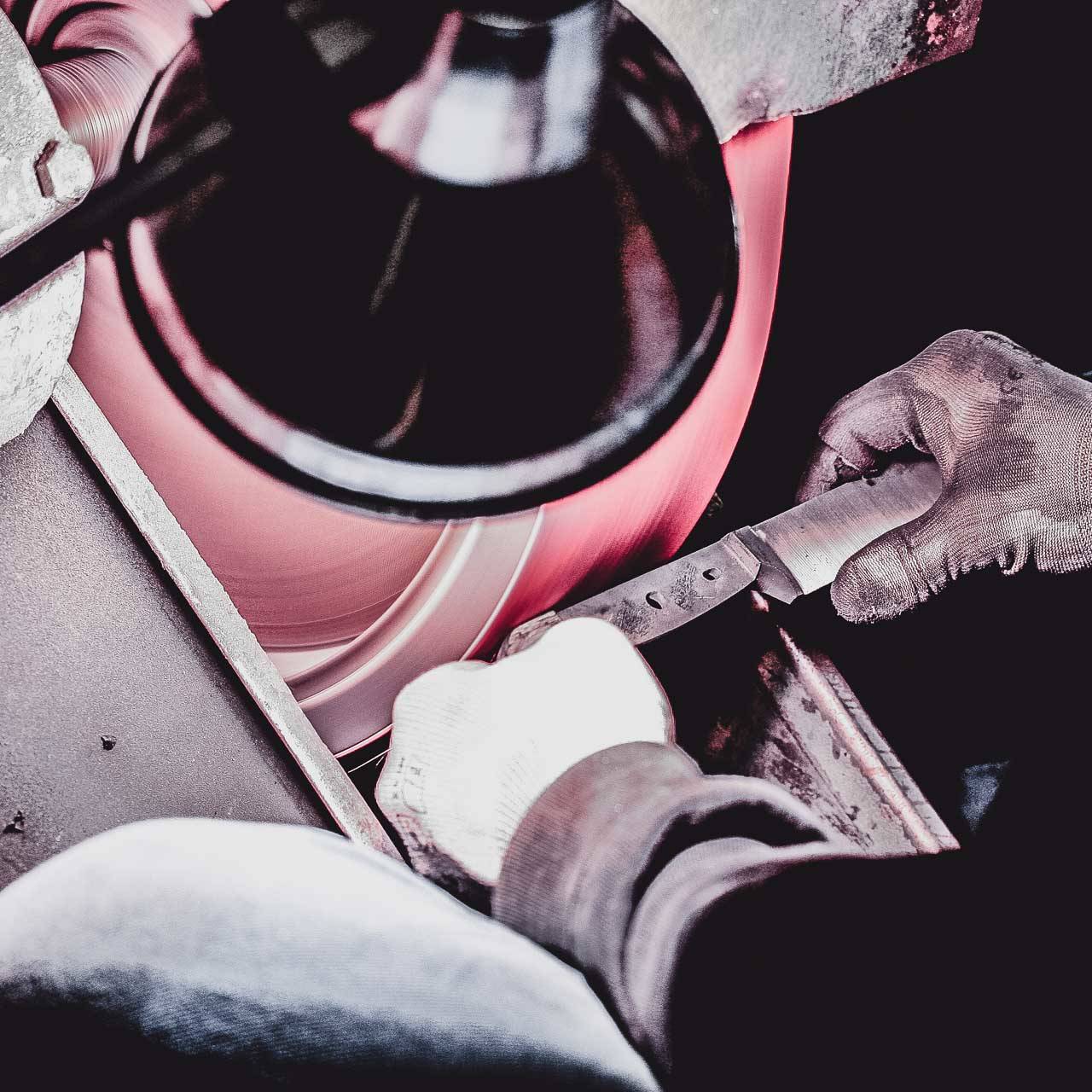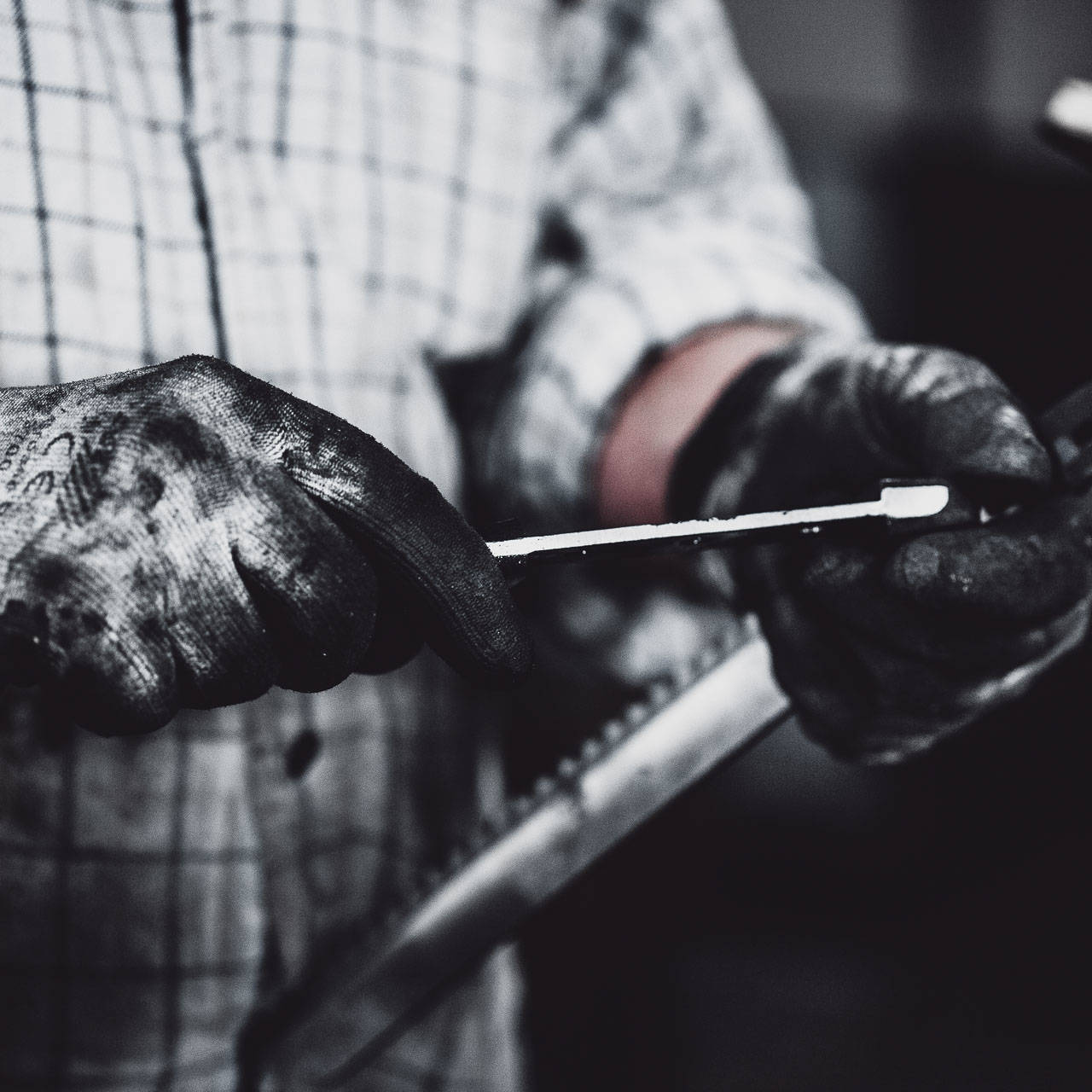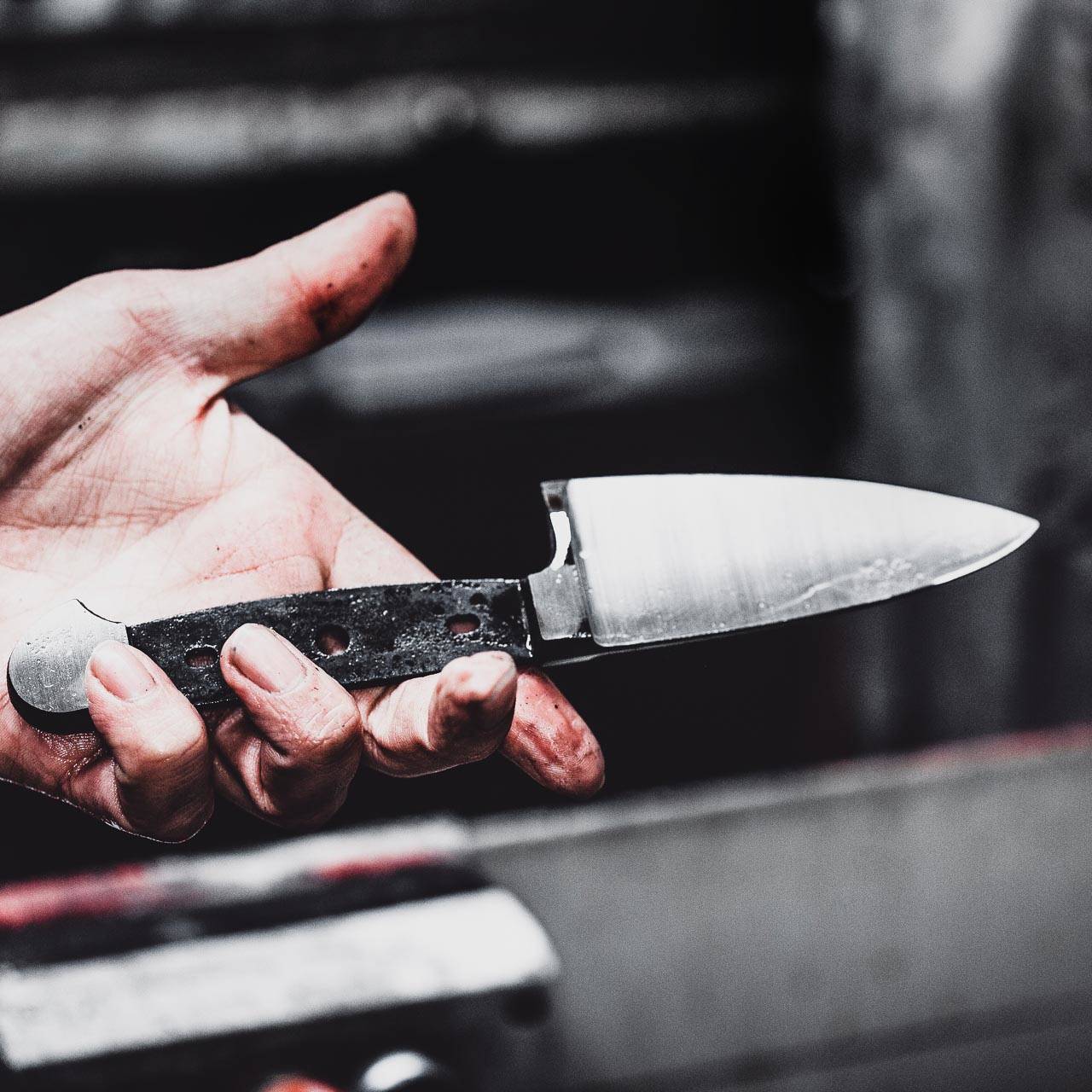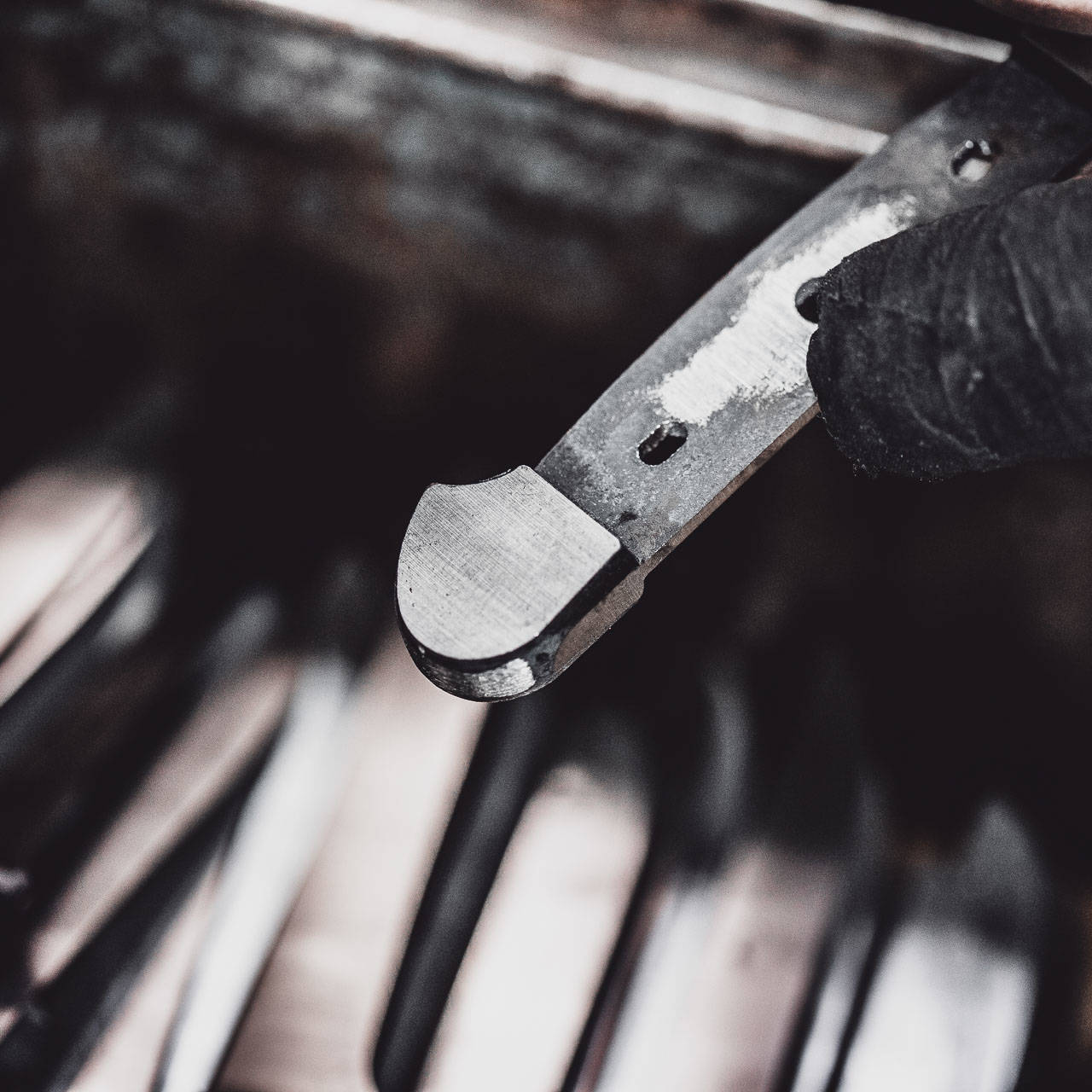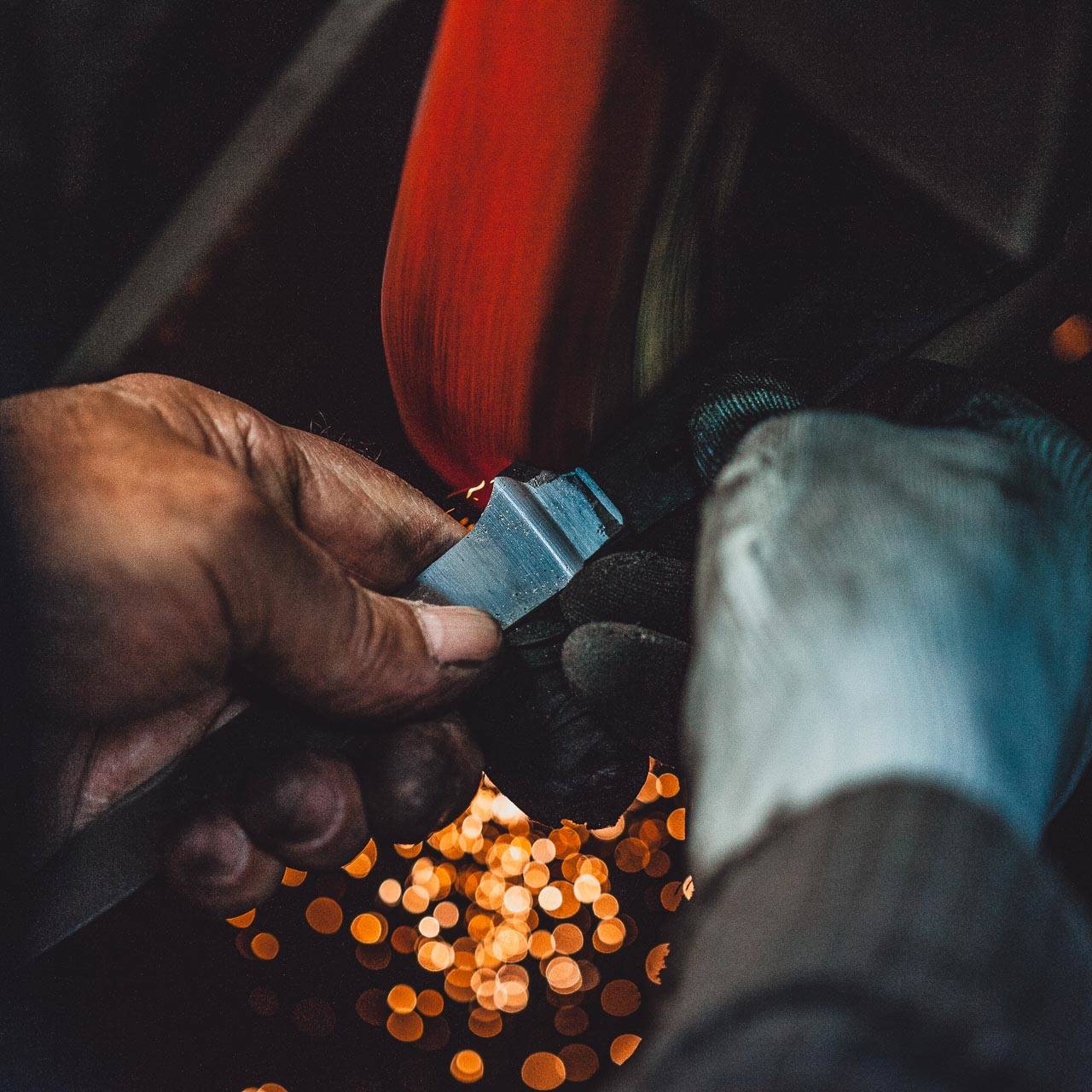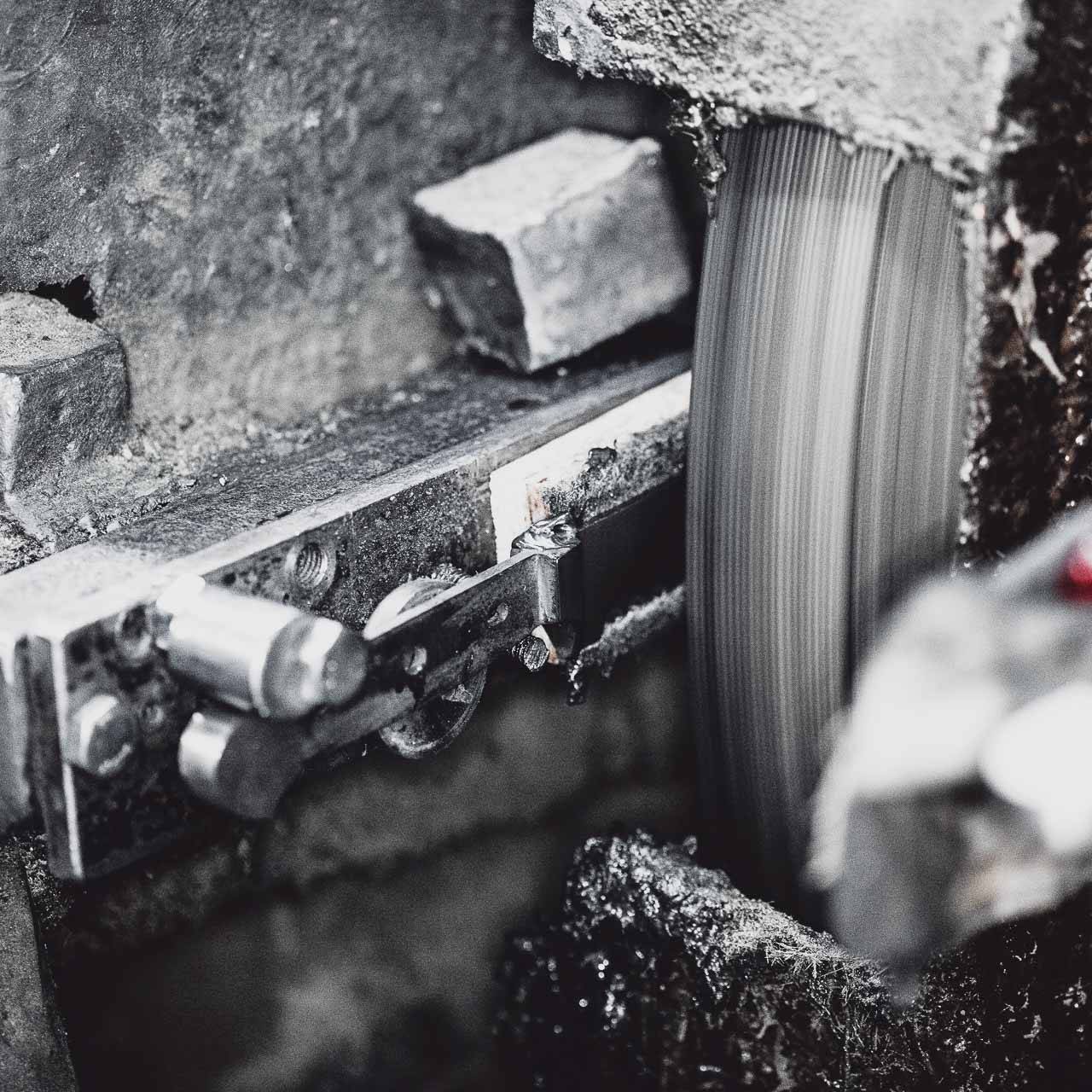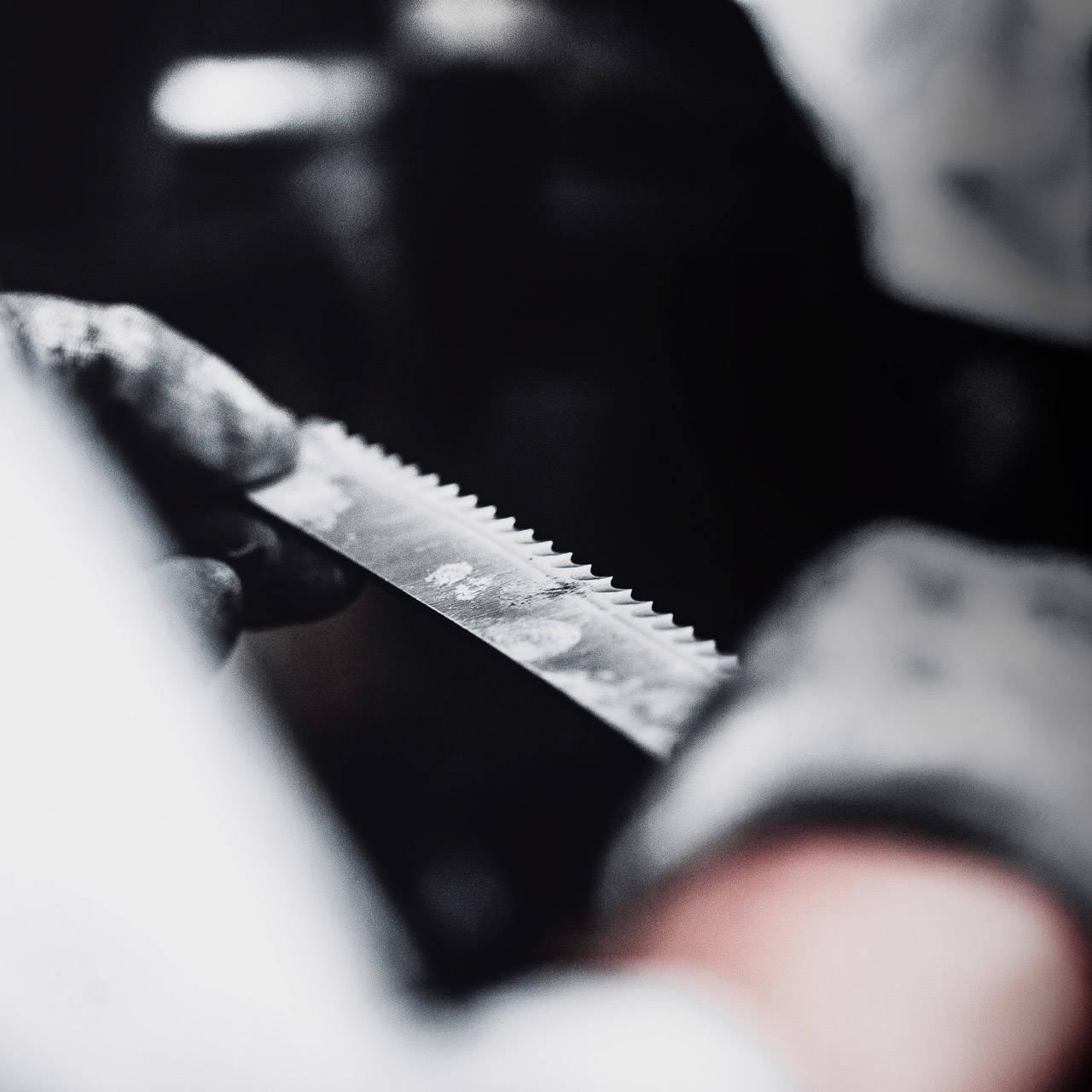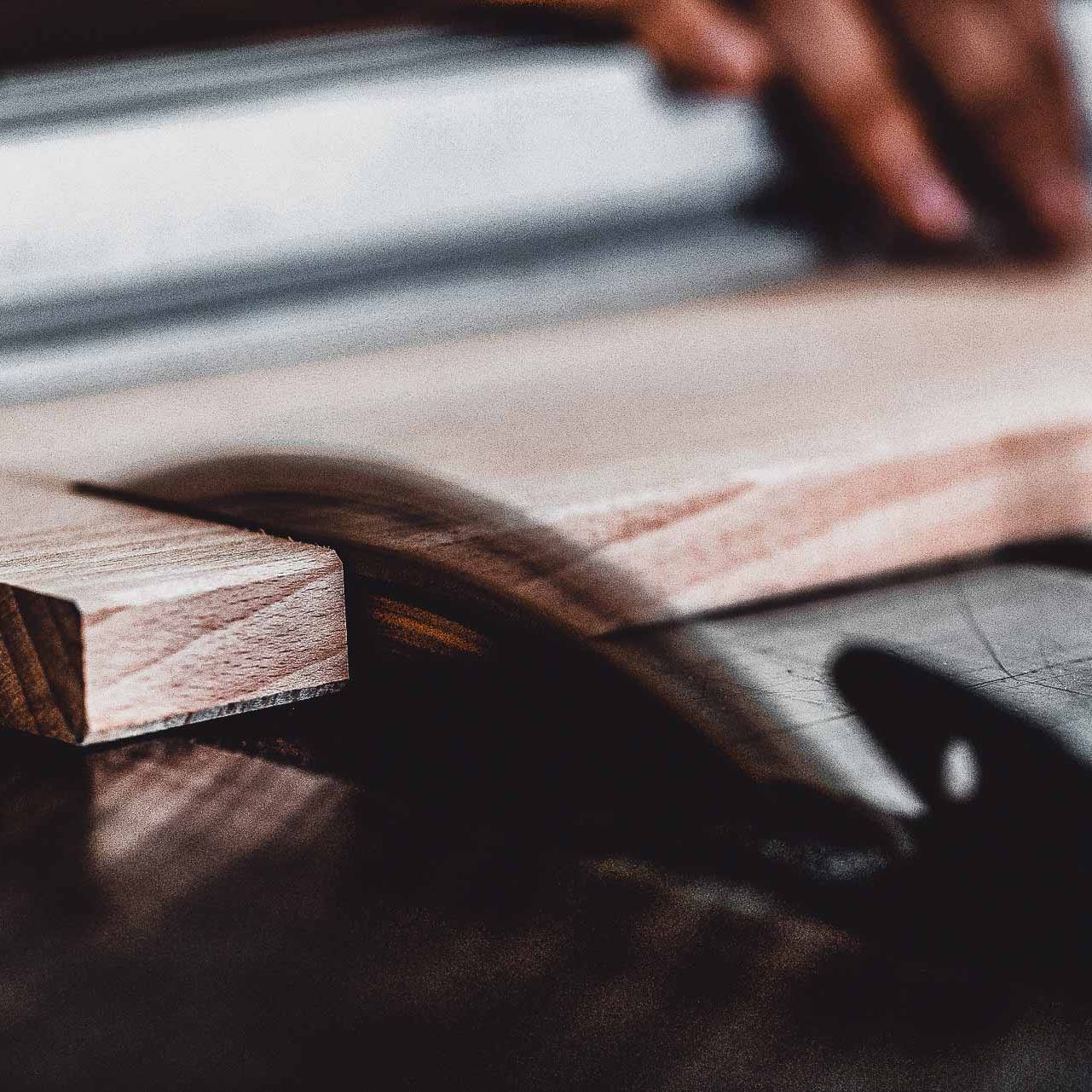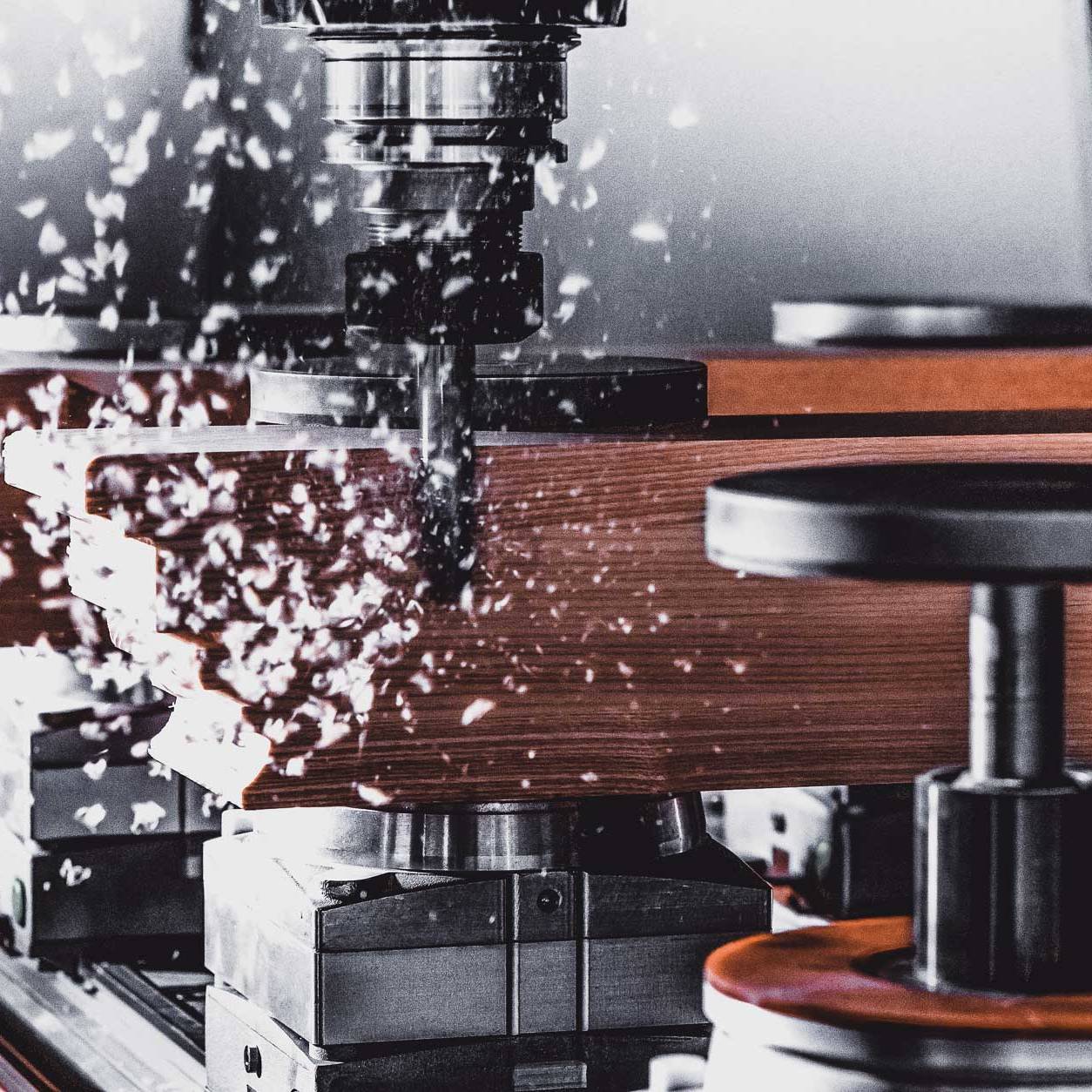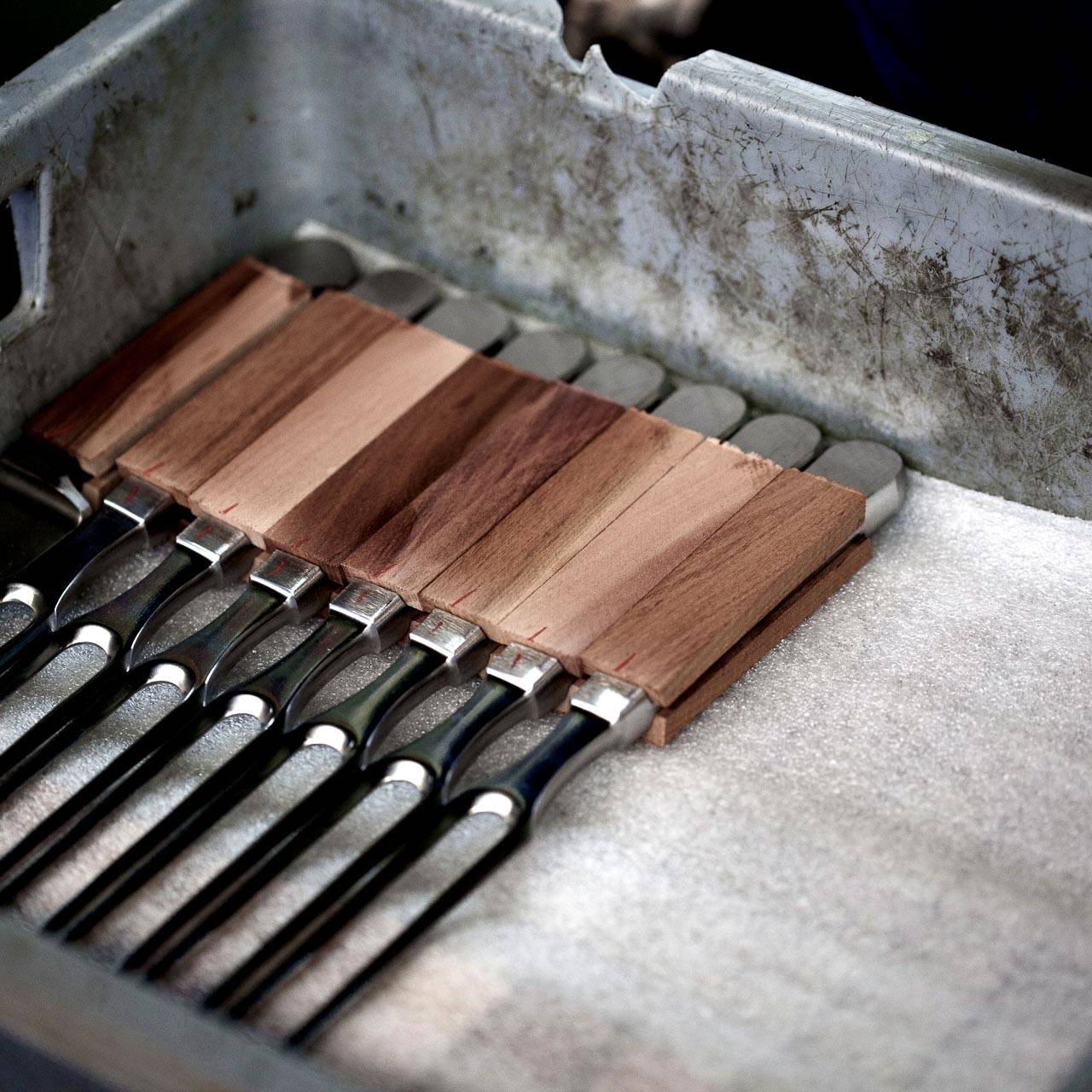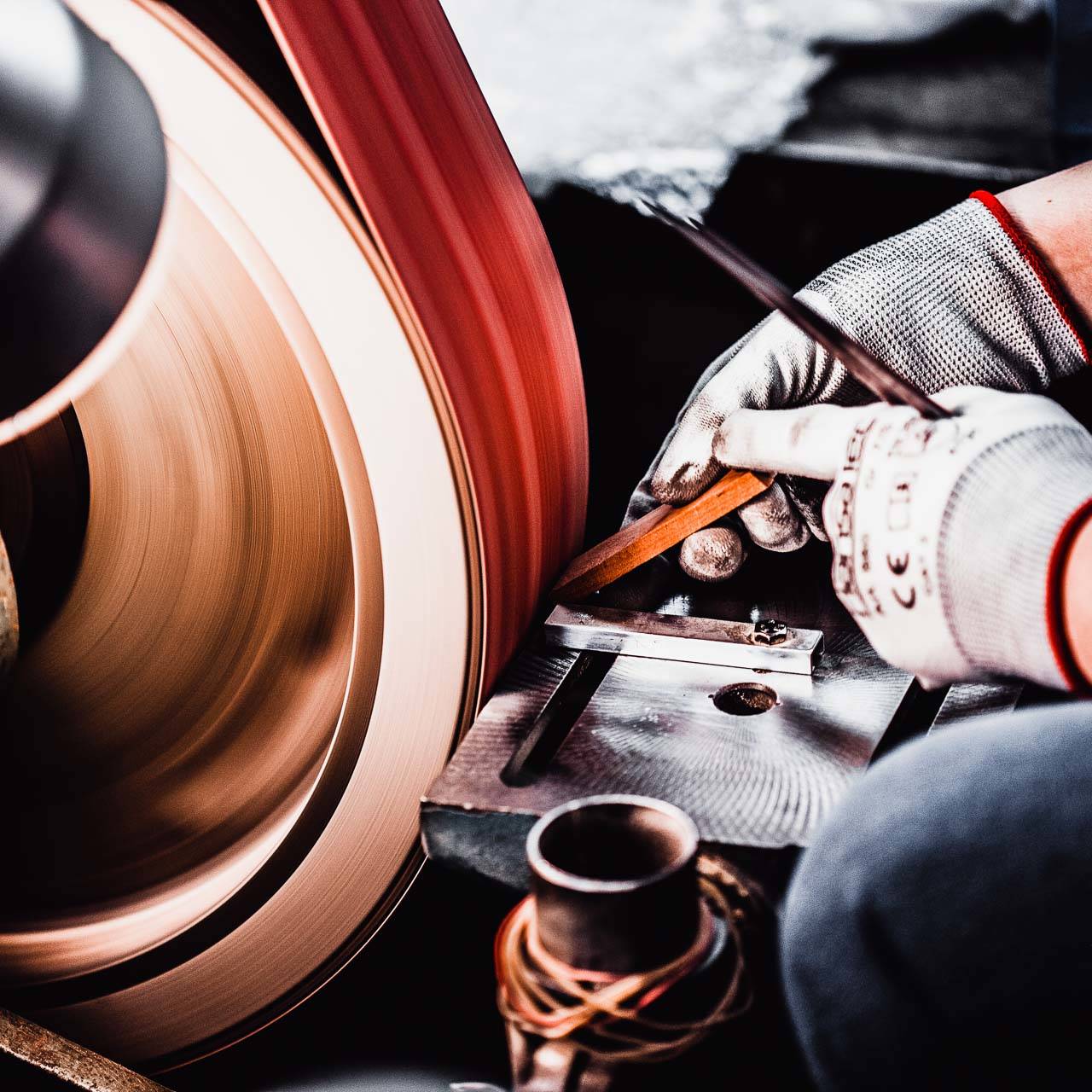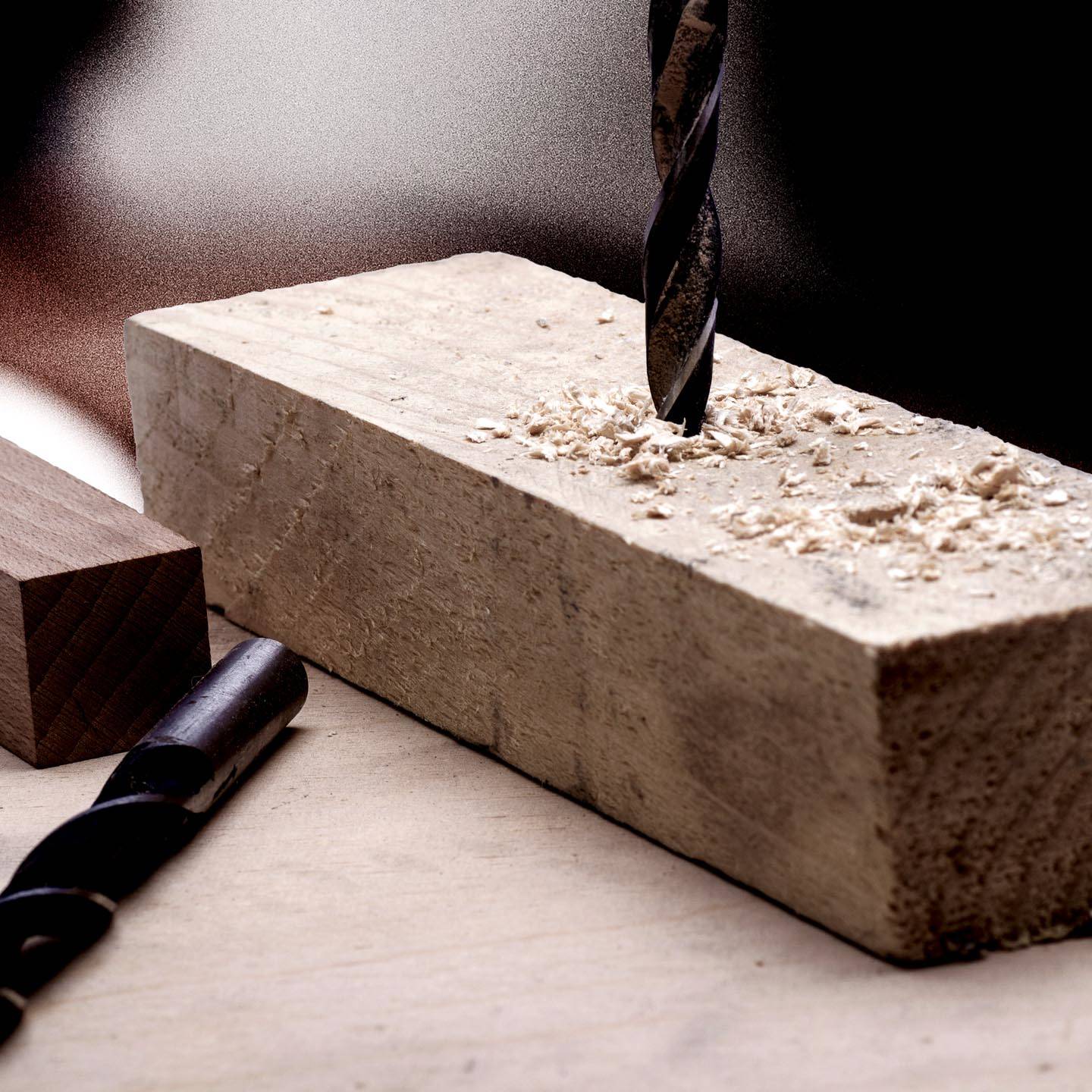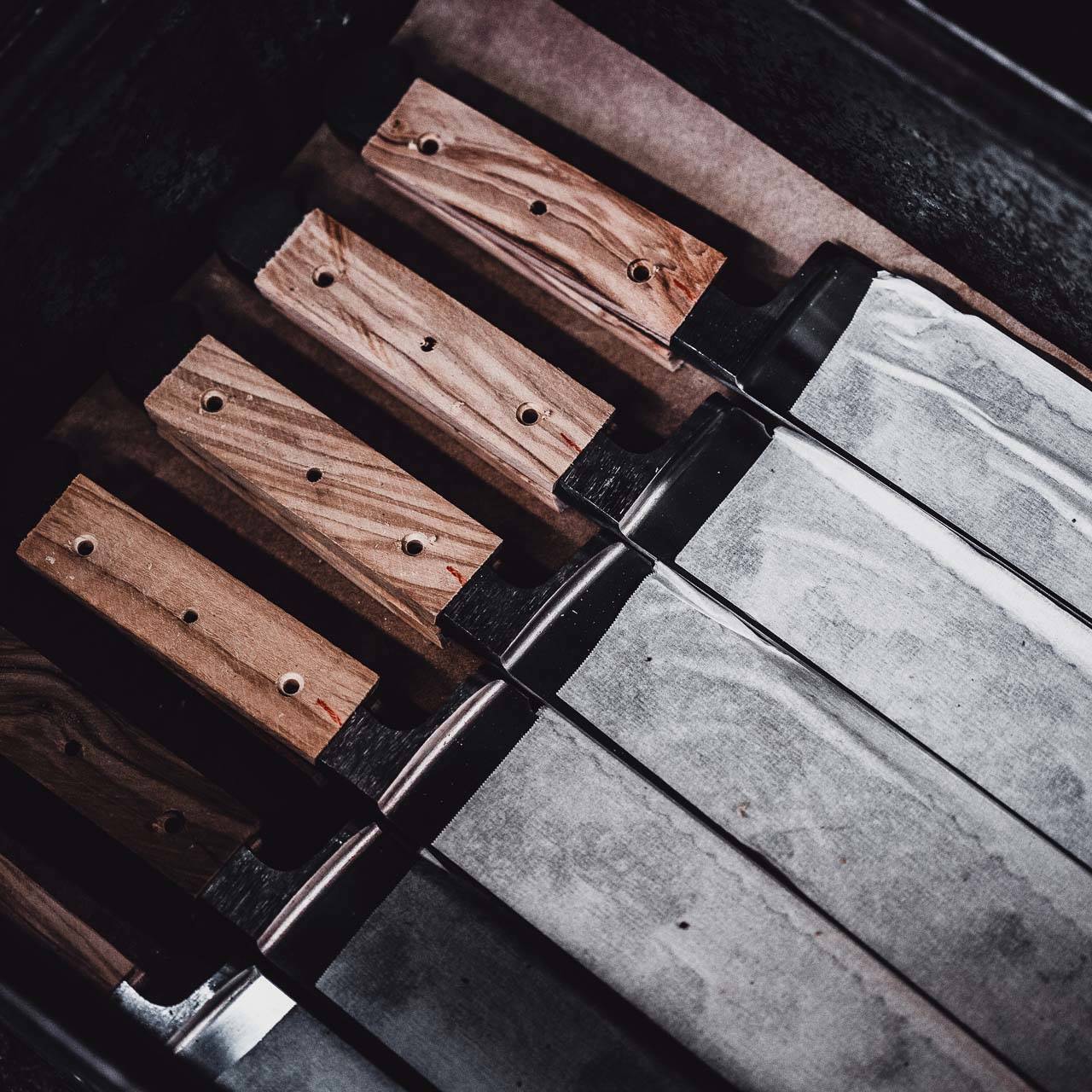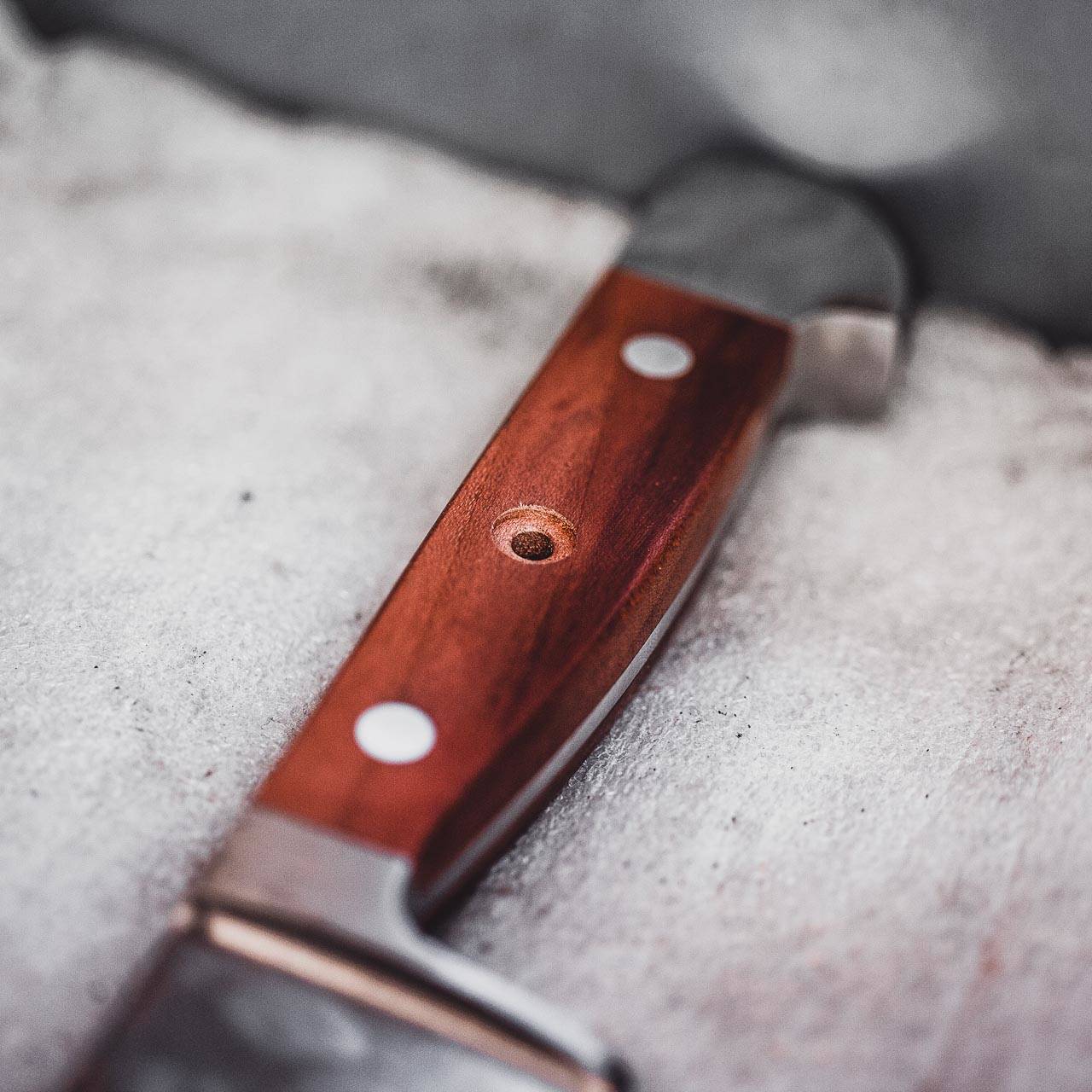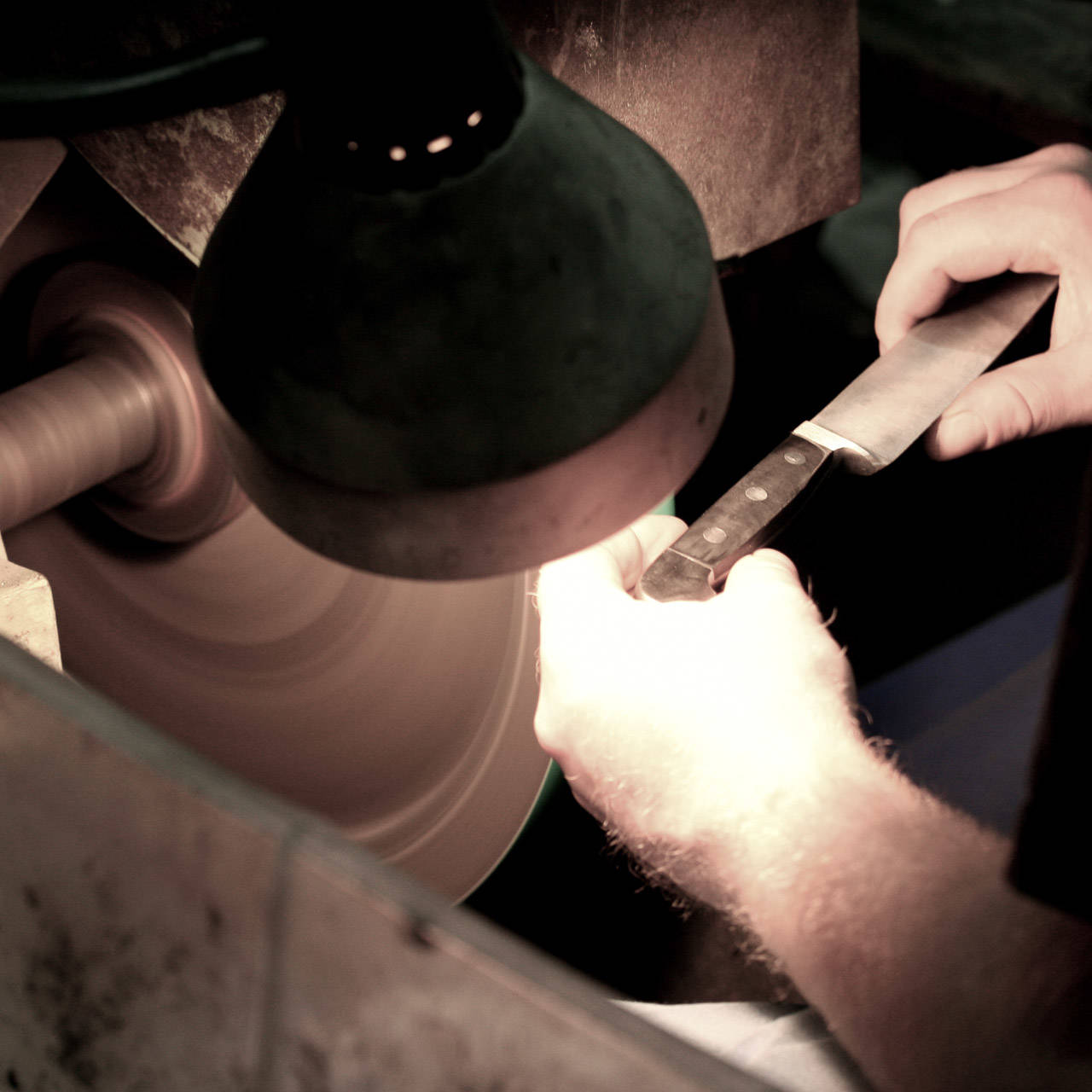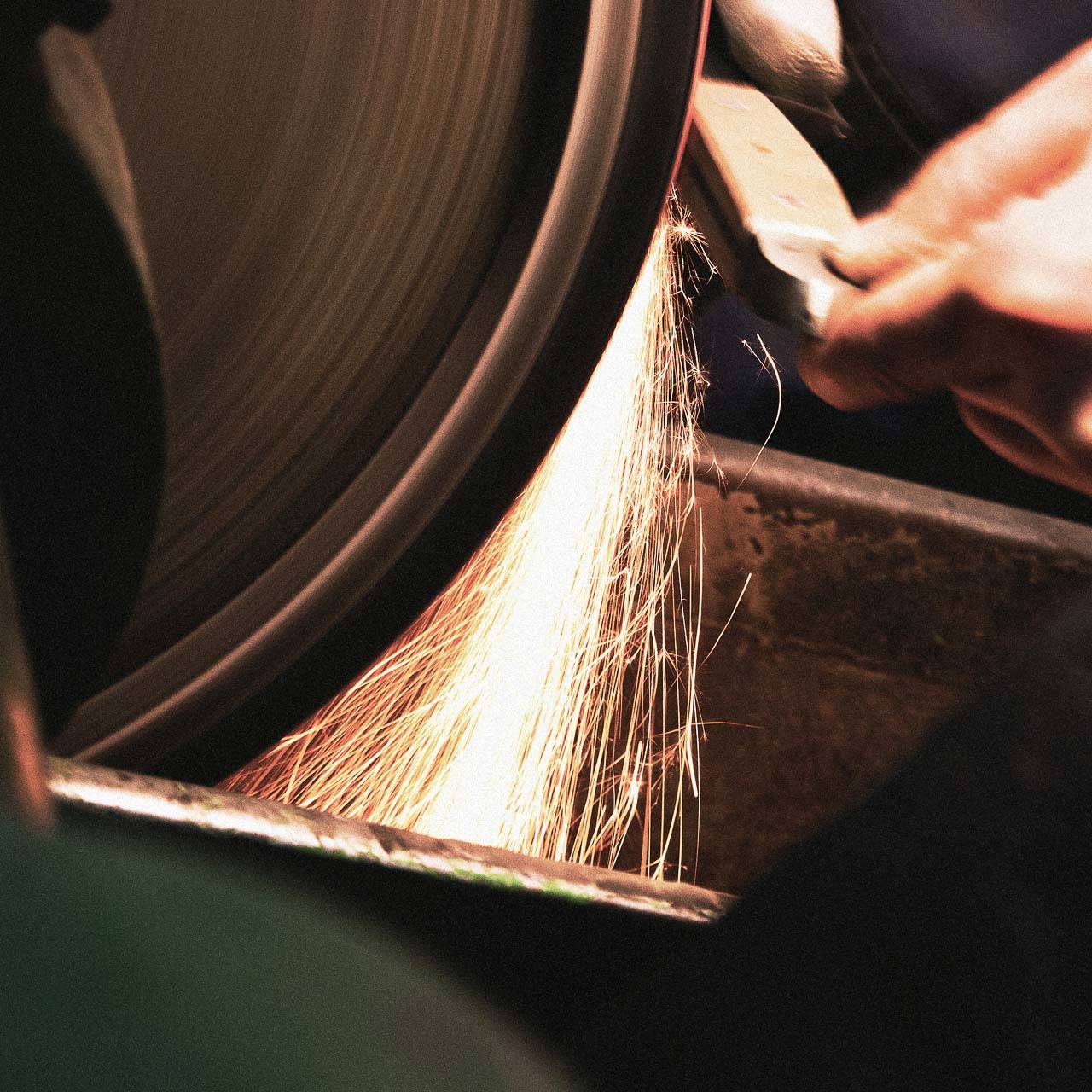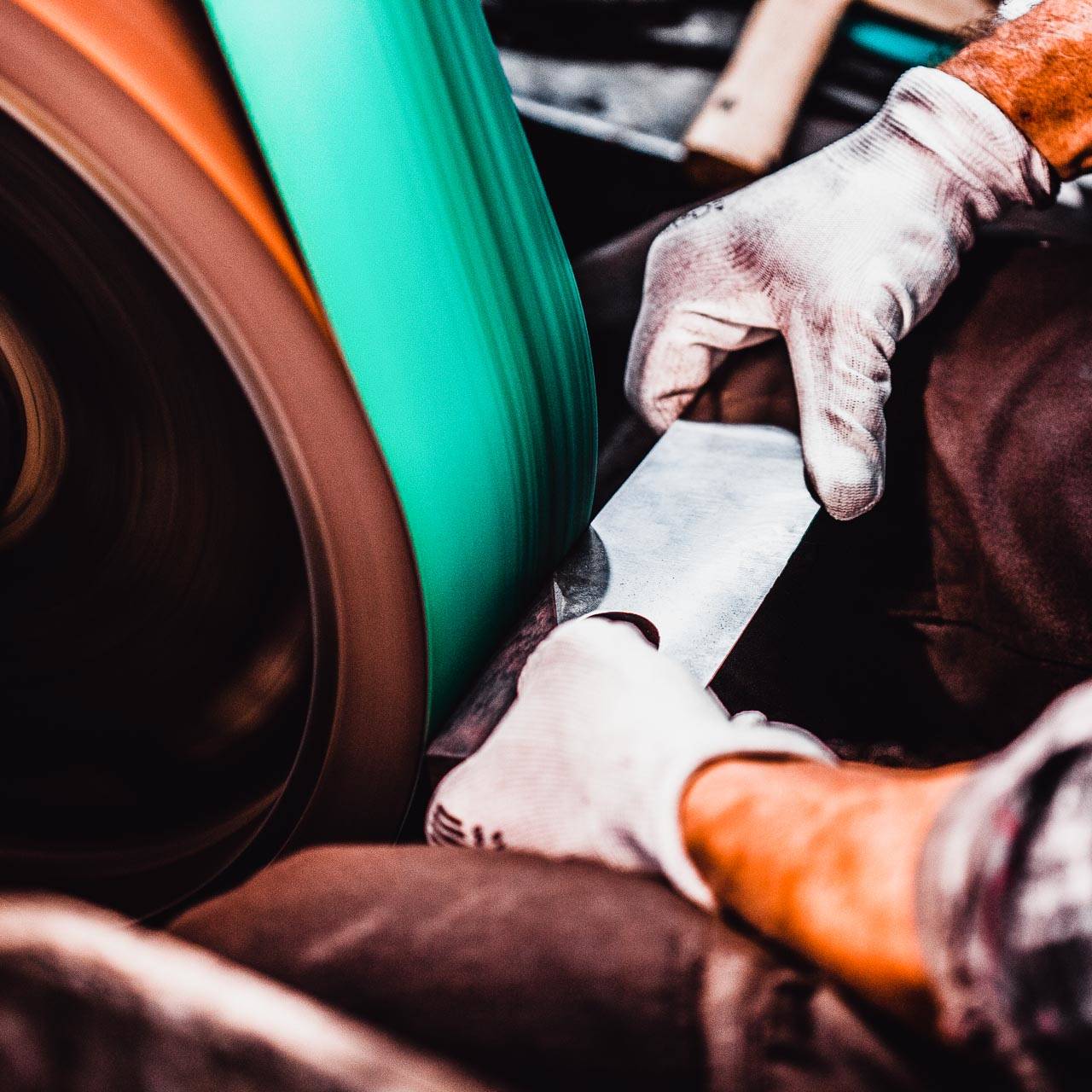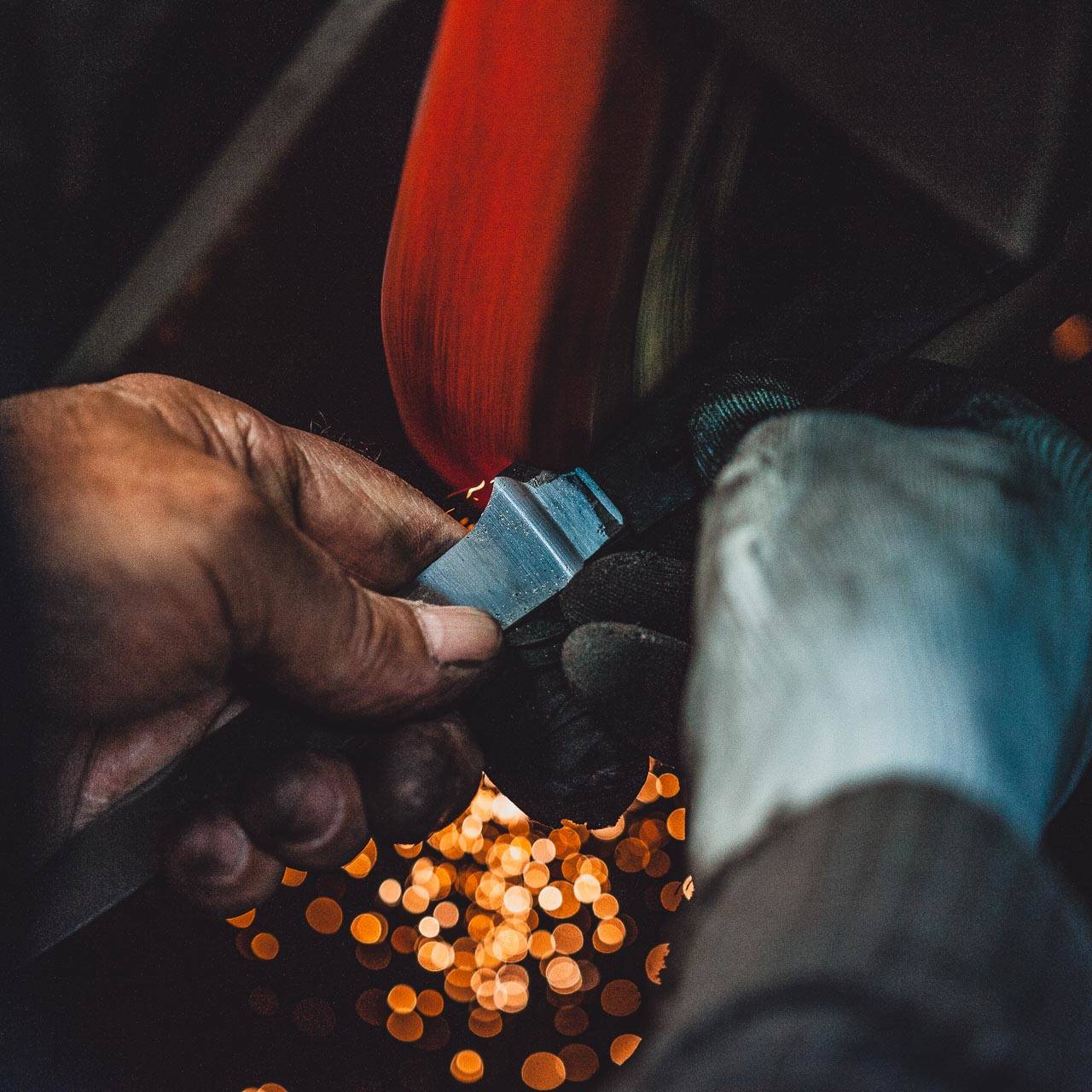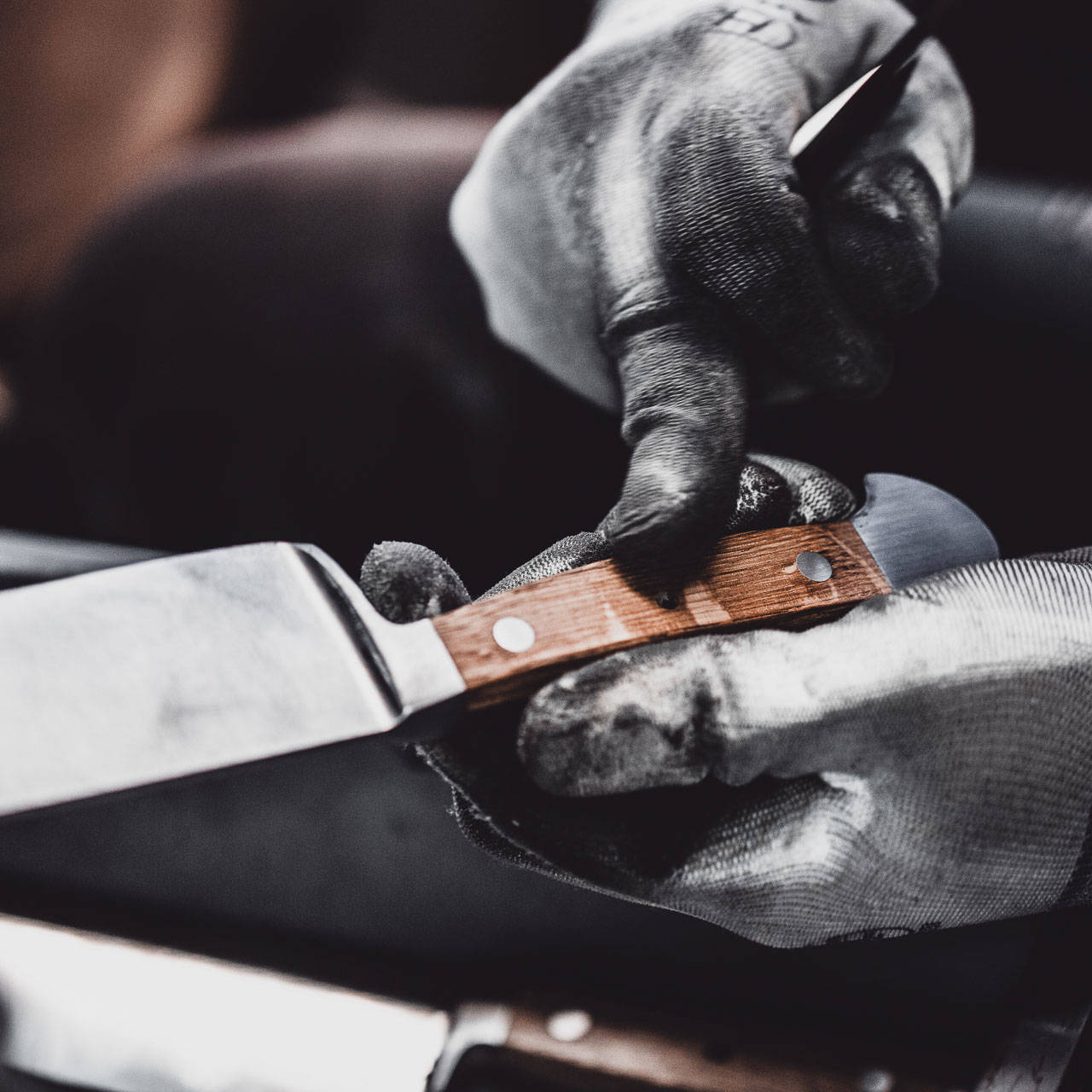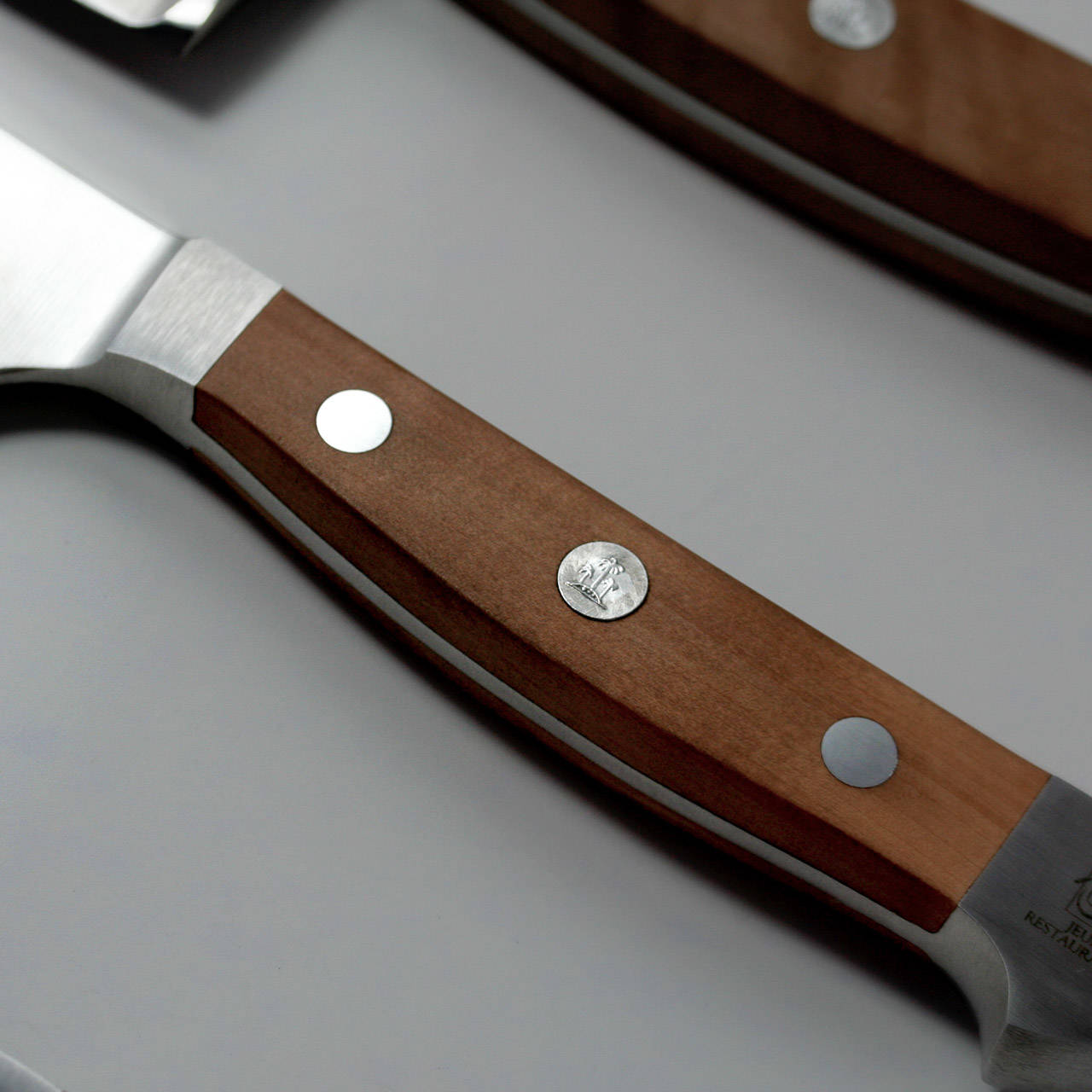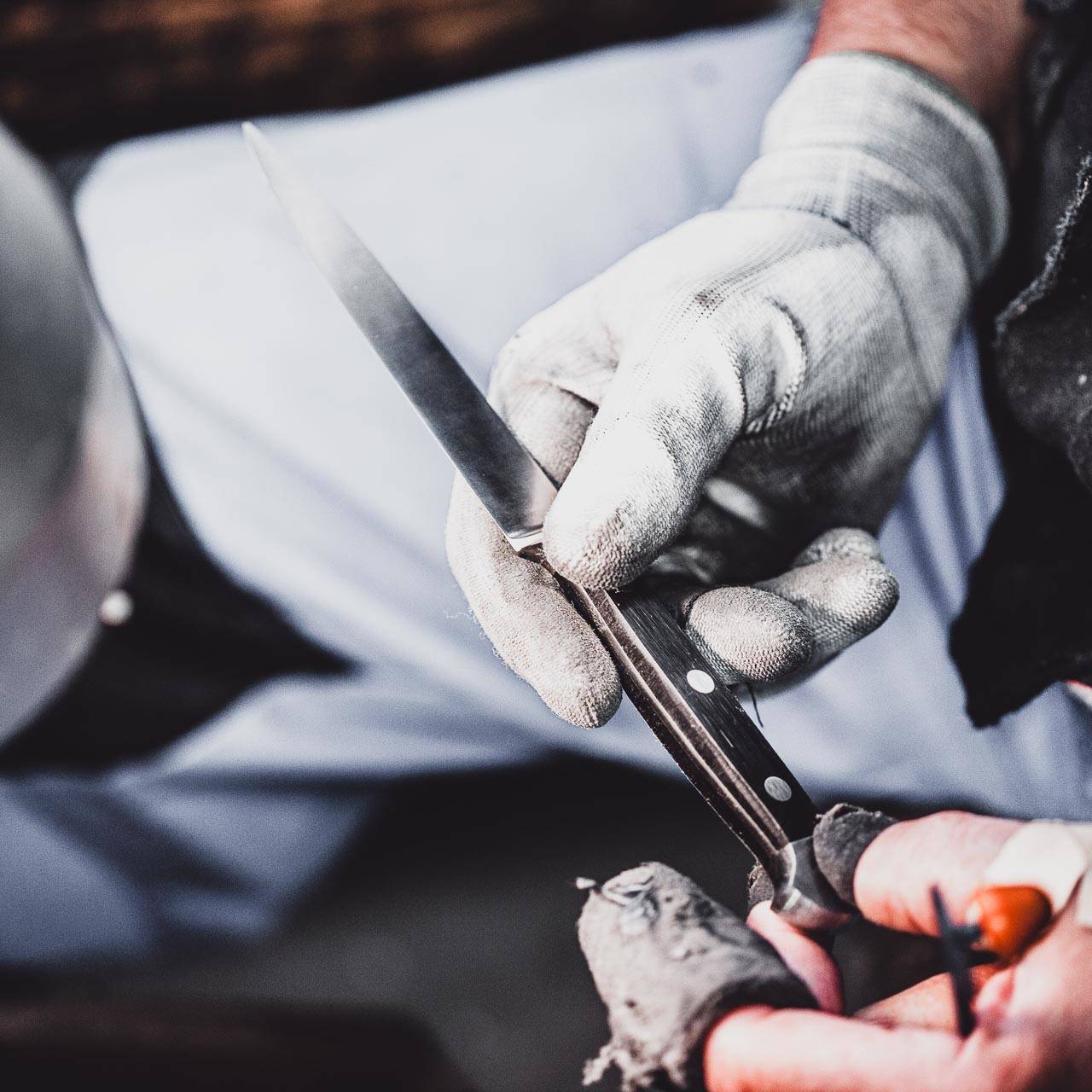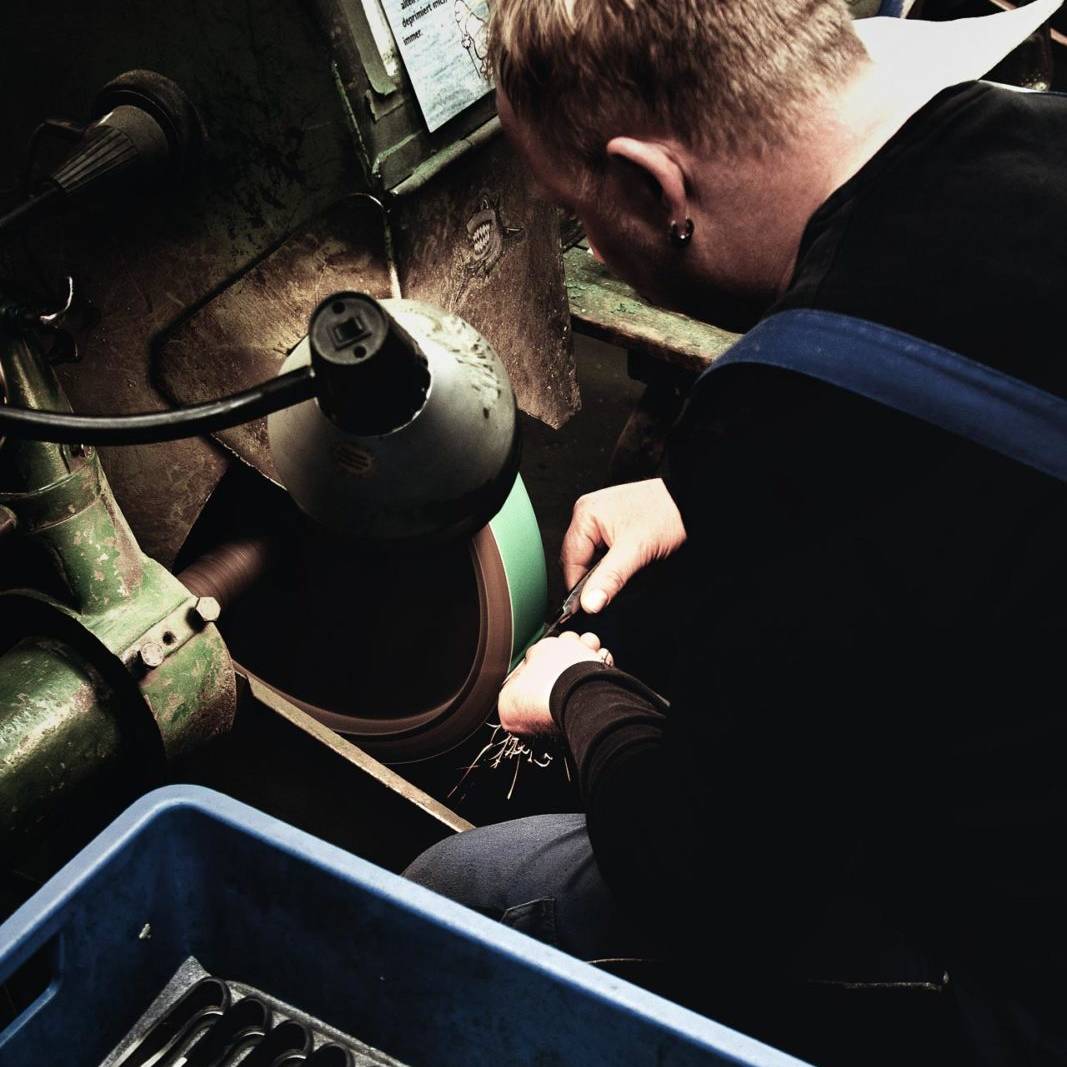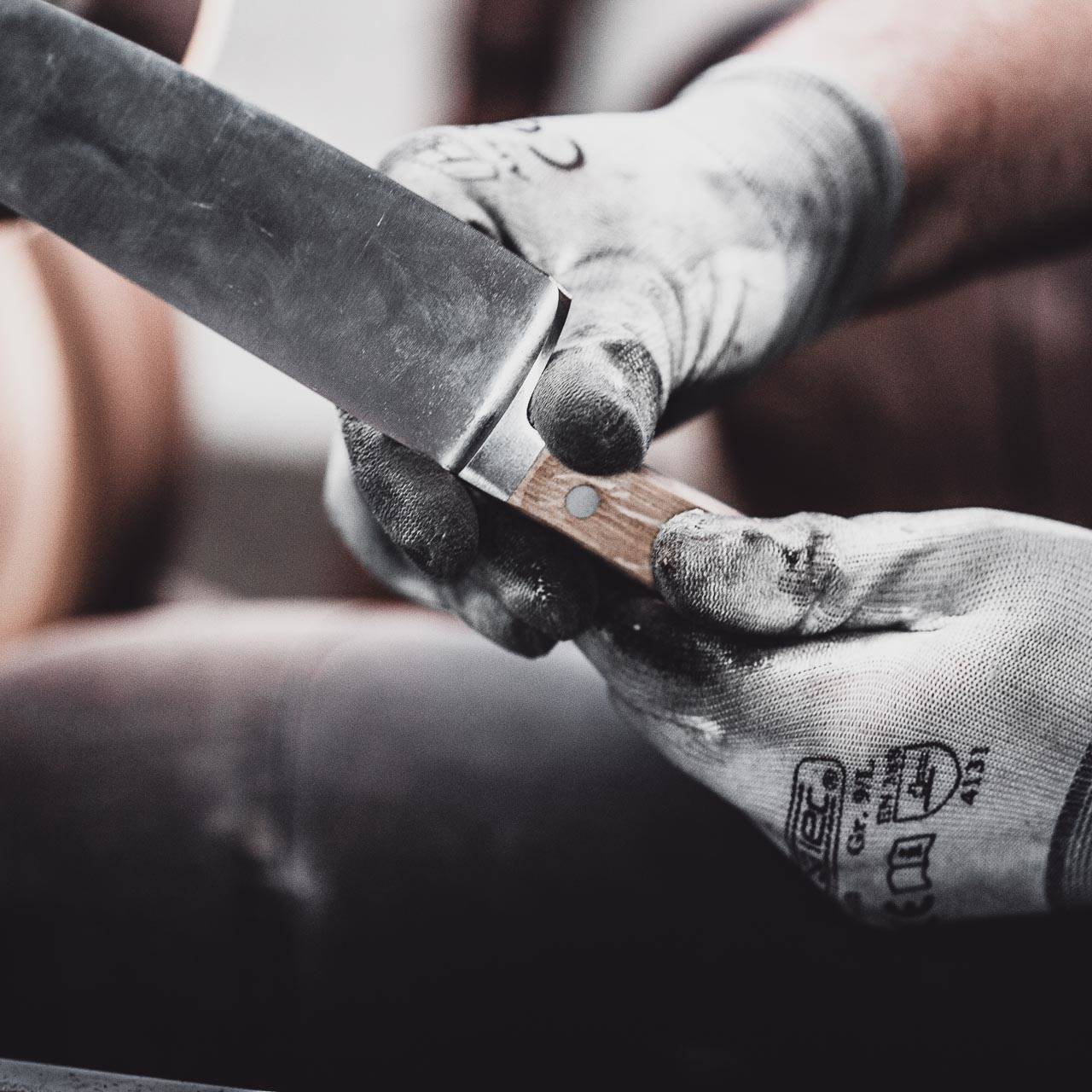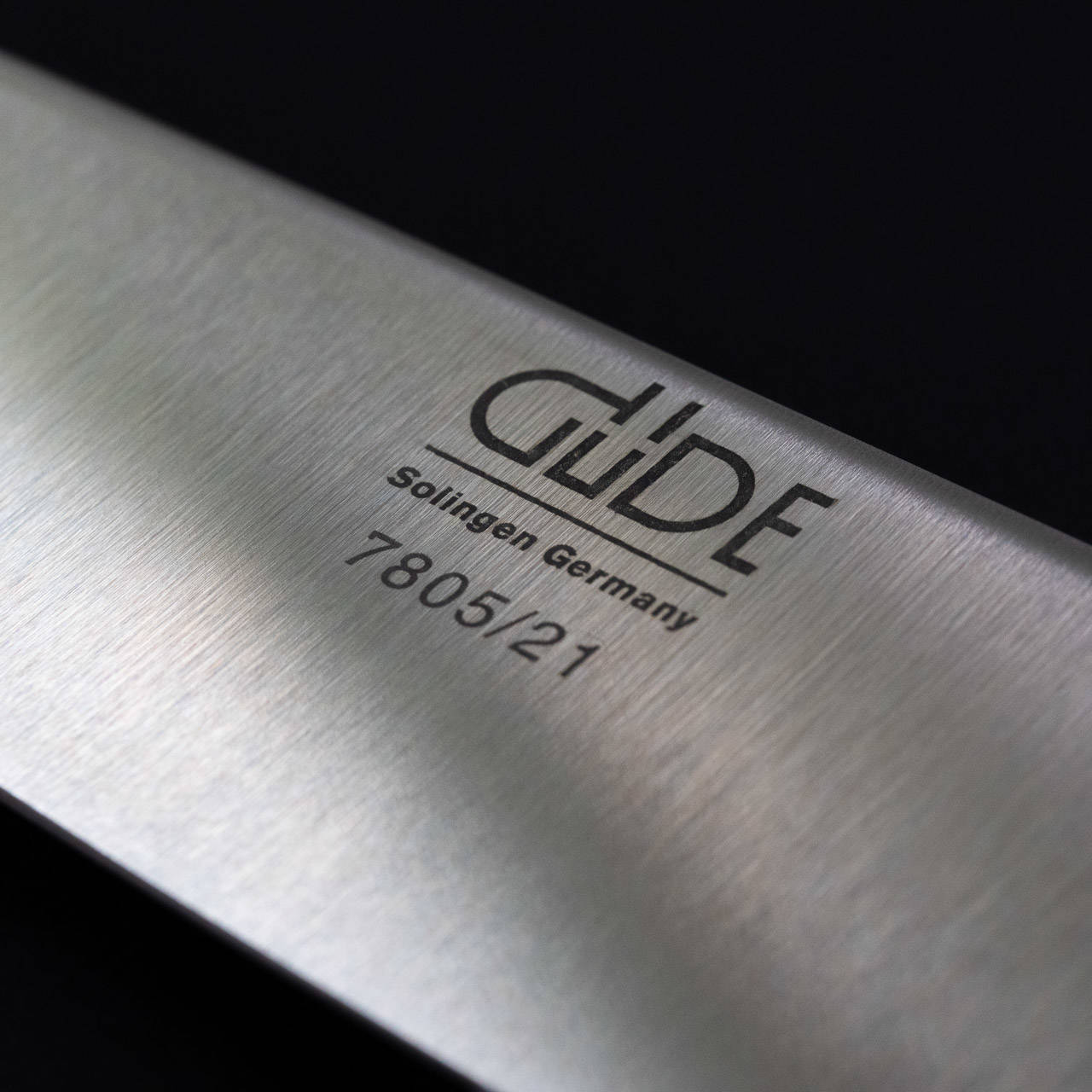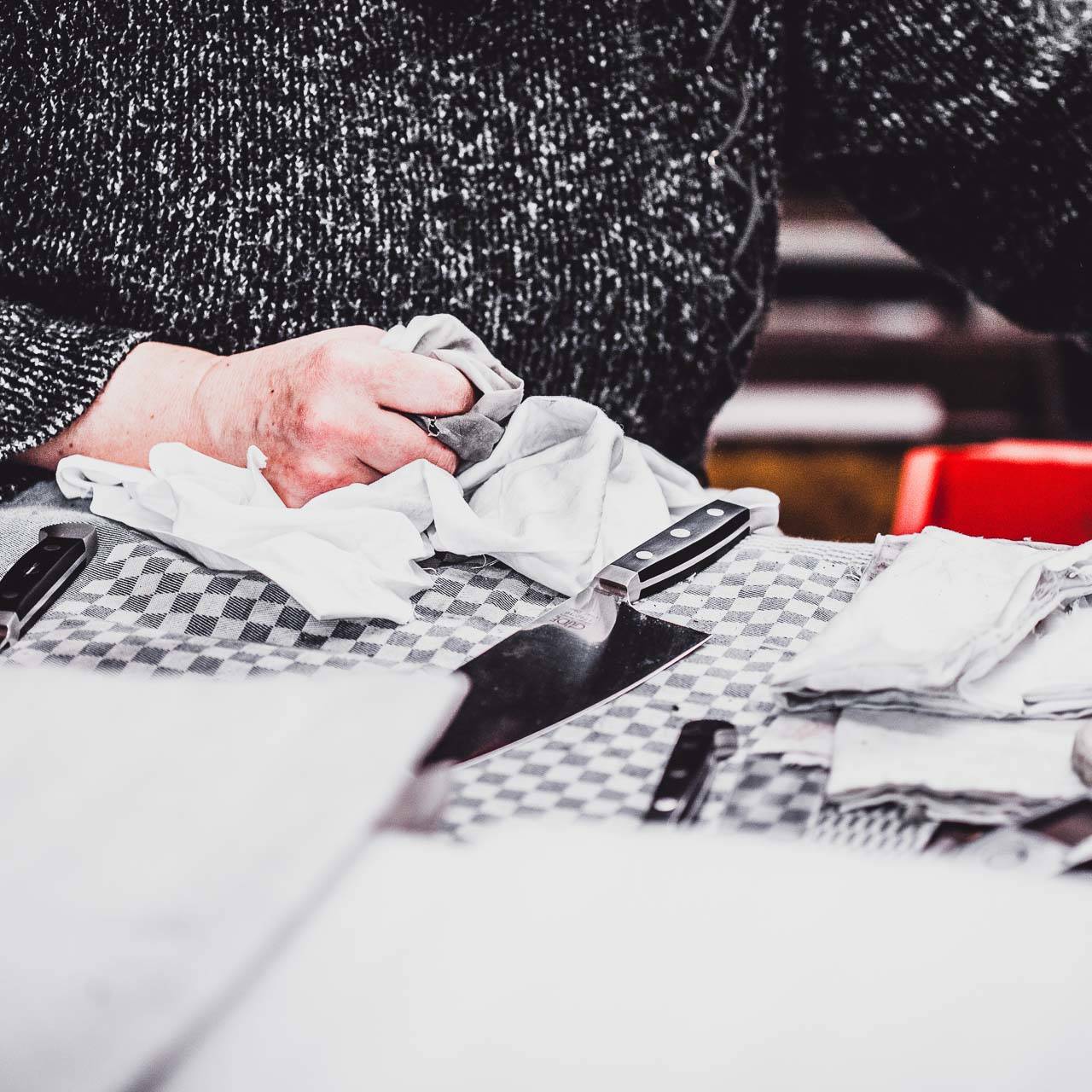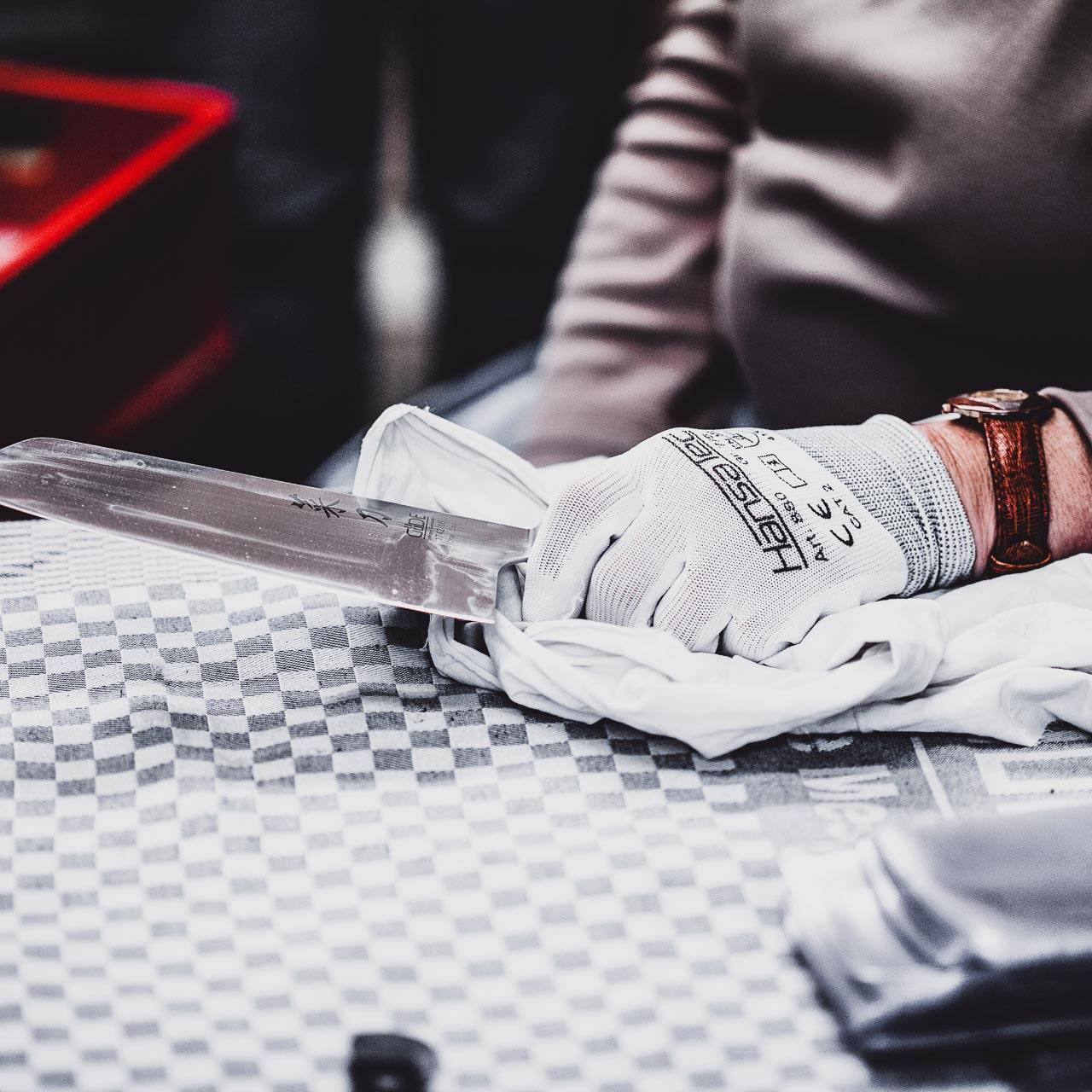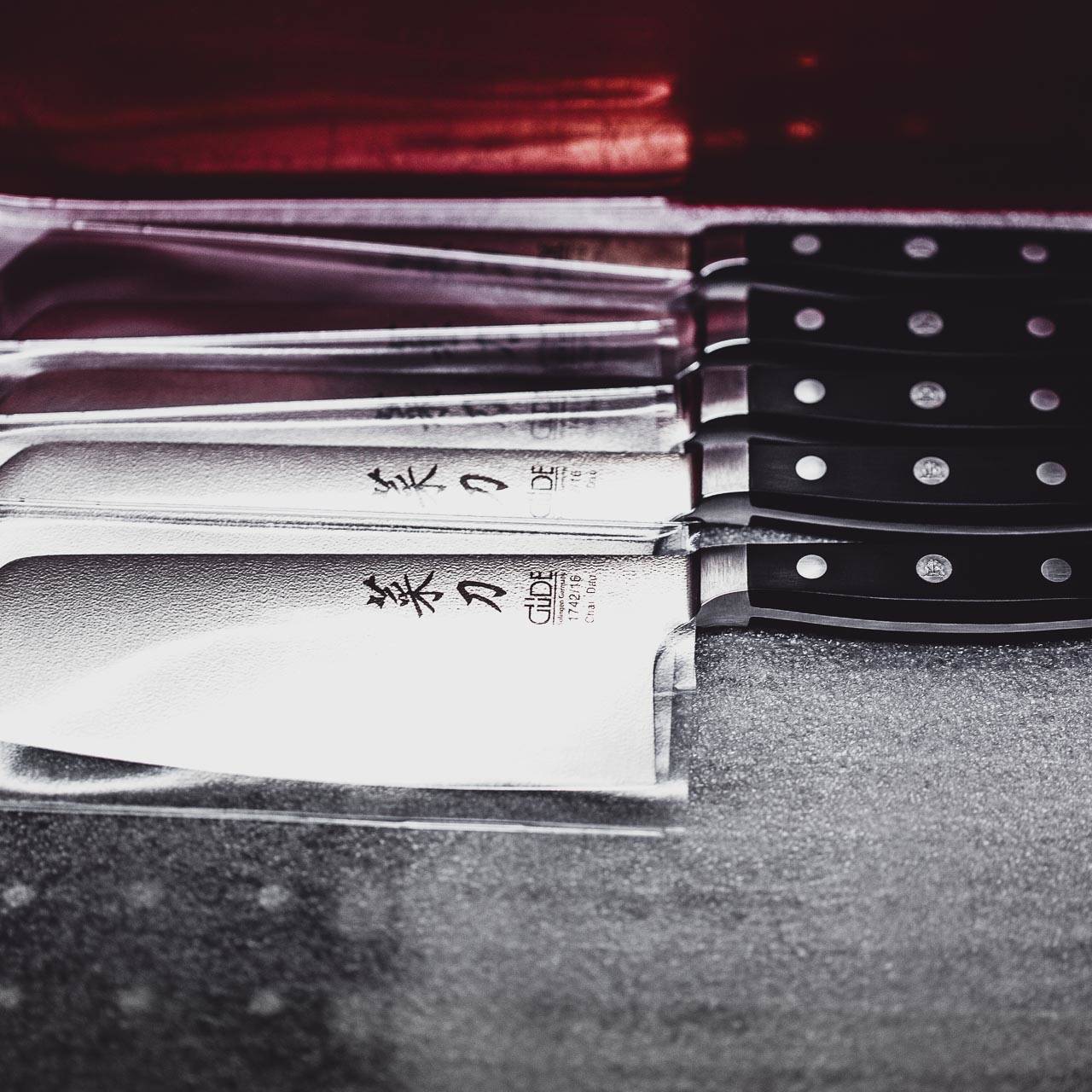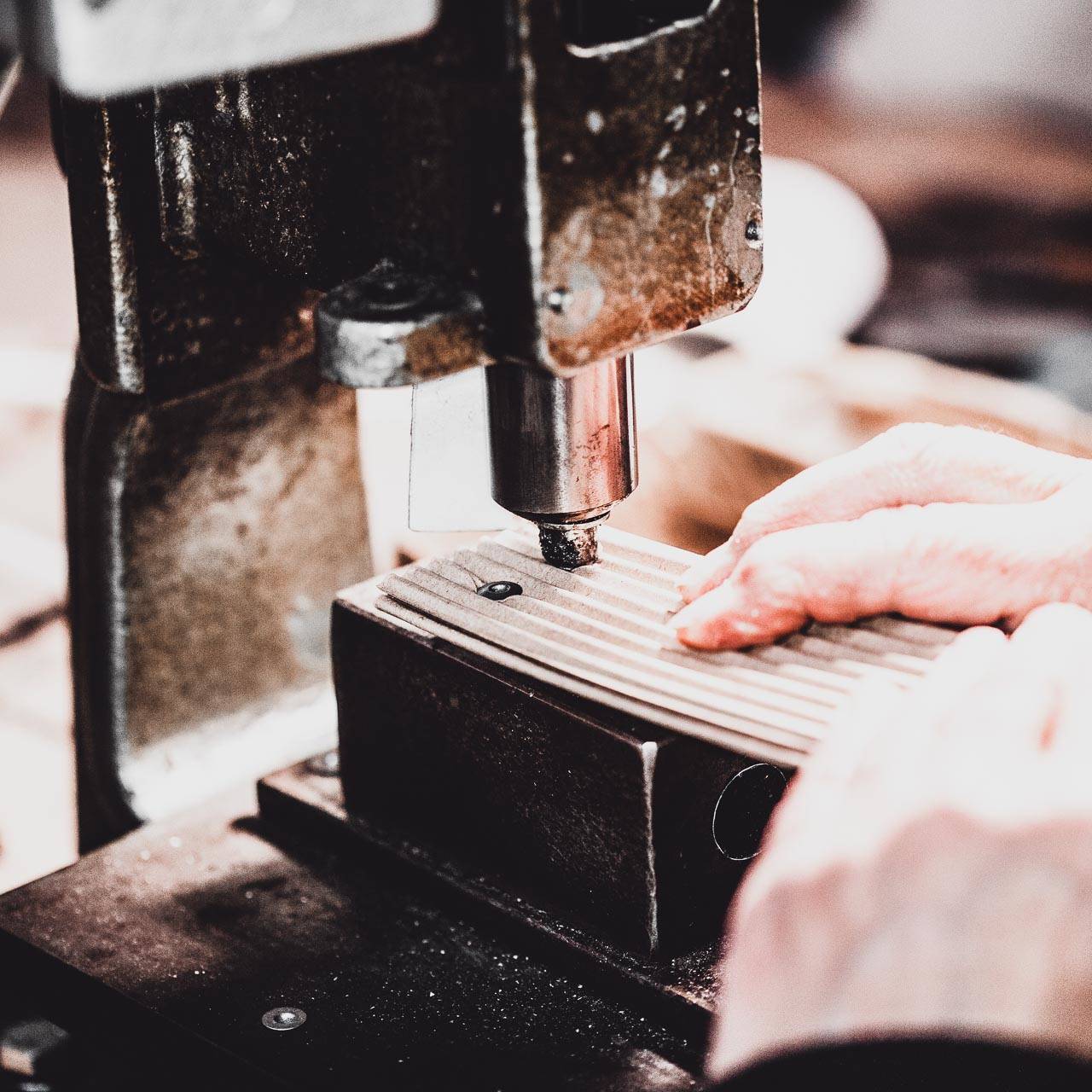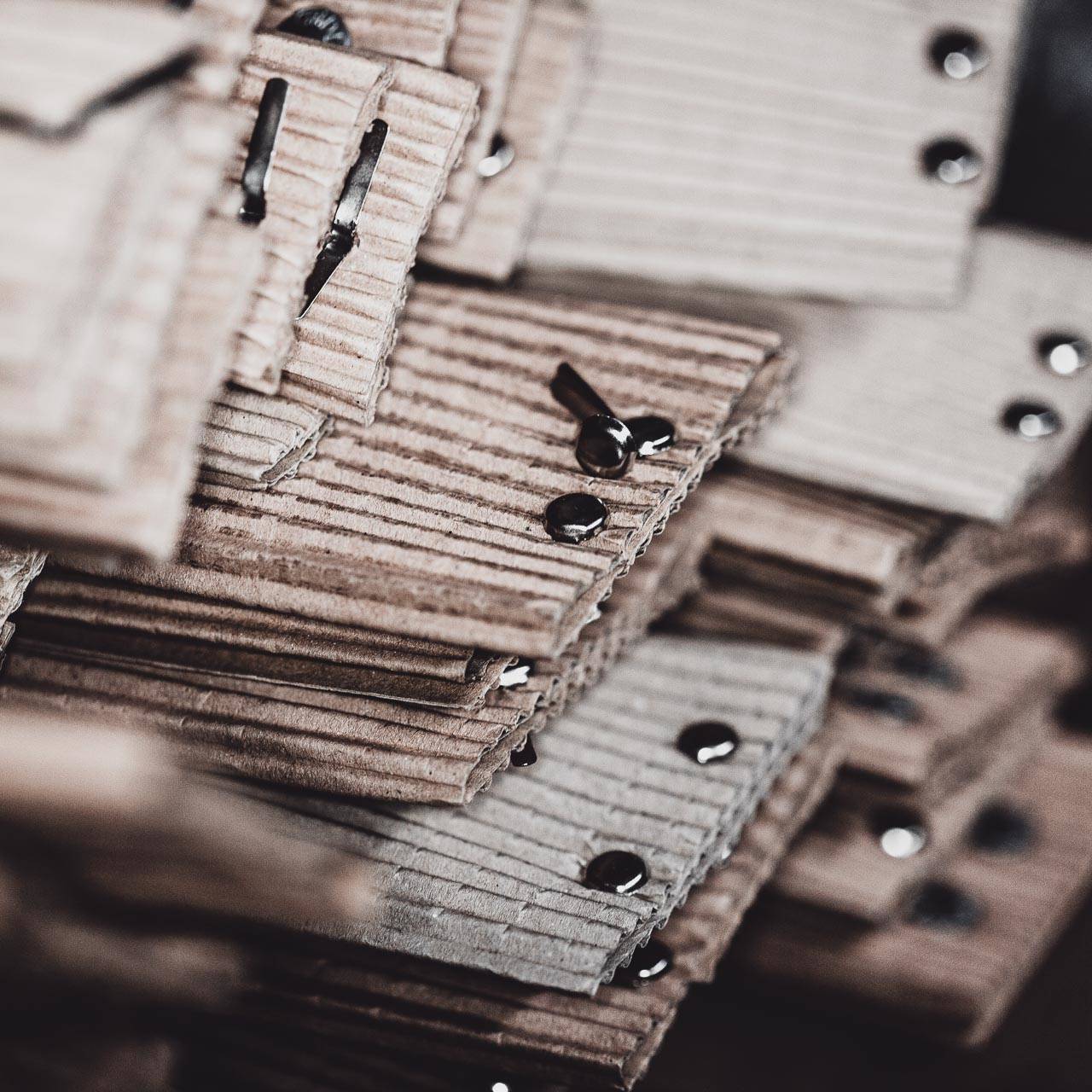55 manual operations
It all starts in the drop forge: slit pieces are cut from an 8 metre long bar steel (chrome, vanadium, molybdenum knife steel). They are heated up to around 1050 °C and forged in the die with 3 to 4 hammer blows. Finally, the knife blank is stamped out of the forging.
Production steps
First the blade is pre-ground, then the knife back is pre-ground. This is followed by the fine grinding of the back of the knife and the sharpening of the bolster. The inside of the handle is pre-ground. Pre-grinding of the bolsters is done in 5 steps. This is followed by the fine grinding of the blade. This is also called "pliestening". For bread knives, the serrated edge is now applied, and for dinner knives, the bolster is added. With tomato knives. For tomato, cheese and steak knives, the serrations are also applied. Now the blade is finished and the handle can be mounted.
Scantlings are cut from the wood and contour milled. The scantlings are now adapted to the knife handle. Then the holes for the rivets are drilled. A countersink must be made in the holes for the rivet heads. The handle and the blade are now joined by rivets. The piece of wood is roughly sanded to the blade in about five operations. These five operations must be repeated with a finer sanding belt.
Now the back of the knife gets the finishing touches: the fine grinding of the front bolster is done and the knife handles are pre-polished (scrubbed). Then the central decorative rivet is mounted and the handles are finely polished. Then the knife edge is ground (honed) and the trigger is polished. In the next step, the GÜDE logo is etched onto the blade.
The knives are then cleaned. Before the knives are made ready for dispatch, quality control is carried out. After the quality control, the knives get their protective cover. Finally, the handmade shipping bags are fitted with rivets and appropriate stickers. Then the finished knives are prepared for shipping.

